intentional community
description: planned, socially-cohesive, residential community
77 results

Finding Community: How to Join an Ecovillage or Intentional Community
by
Diana Leafe Christian
Published 14 Jun 2007
People exactly like this visit ecovillages and intentional communities every week. “We didn’t know a place like this existed!” they often say. It’s also for people who might consider joining an ecovillage or intentional community sometime in the future — and who’d like some guidance in the meantime about how to go about it. Lastly, it’s for active “community seekers” — people engaged in the process of seeking an ecovillage or another kind of sustainable intentional community — who would like some tips and pointers on how to make the journey far easier. What is an Intentional Community? My favorite deŠnition of an intentional community is Bill Metcalf ’s in The Findhorn Book of Community Living (Findhorn Press, 2004): “Intentional communities are formed when people choose to live with or near enough to each other to carry out a shared lifestyle, within a shared culture and with a common purpose.”
…
(English and German editions.) eurotopia.de/englindex Directory of Ecovillages in Europe, Barbro Grindheim and Declan Kennedy, gen-europe.org Communi, Communia, ed Ecovillaggi in Italia, Manuel Olivares, Malatempora, 2003. manueloliveras@liberto.it (In Italian) Eco-Villages and Communities in Australia and New Zealand, Barbara Knudsen and Morag Gamble, GEN-Oceania/Asia, 2000. Available in the US from Ecovillage Training Center, ecovillage@thefarm.org Utopianz: A Guide to Intentional Communities and Communal Living in Aotearoa New Zealand, R. Greenaway, et. al., ed., Umbrella Trust, 2004. straw@paradise.net.nz Online Directories • Fellowship for Intentional Community: directory.ic.org • Intentional Communities Database: icdb.org • WikiPedia, Intentional Communities: en.wikipedia.org/wiki/communities • Ecovillage Network of the Americas (ENA): ena.ecovillage.org • Ecovillage Network of Canada: enc.ecovillage.org • Urban Ecovillage Network: urban.ecovillage.org • Cohousing Association of the United States (Coho/US): cohousing.org • Canadian Cohousing Network: cohousing.ca • Federation of Egalitarian Communities (FEC): thefec.org • National Association of Housing Co-ops (NAHC): coophousing.org • North American Students of Cooperation (NASCO) (Student Co-op Housing): nasco.coop • Senior Cooperative Foundation (Senior Housing Co-ops): seniorcoops.org • Cooperative Services, Inc.
…
My favorite deŠnition of an intentional community is Bill Metcalf ’s in The Findhorn Book of Community Living (Findhorn Press, 2004): “Intentional communities are formed when people choose to live with or near enough to each other to carry out a shared lifestyle, within a shared culture and with a common purpose.” Most intentional communities share land or housing or live in adjacent properties, though a few are non-residential. Most govern themselves with some form of participatory democracy, such as consensus decision-making, super-majority voting, or majority-rule voting. Relatively few (usually spiritual or religious communities) are governed by a spiritual or religious leader or a group of leaders.
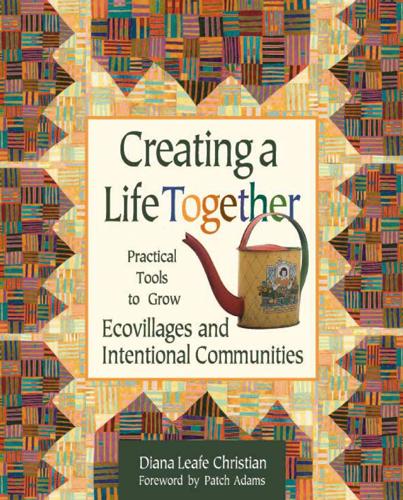
Creating a Life Together: Practical Tools to Grow Ecovillages and Intentional Communities
by
Diana Leafe Christian
Published 1 Jan 2003
Similar to Nolo Press, but for a Canadian readership. Website <www.self-counsel.com> Organizations and Associations Fellowship for Intentional Community (FIC). Membership organization serves intentional communities and community seekers in North America with information and networking. Publishes Communities magazine, Visions of Utopia video, the Communities Directory, and more. Website <www.fic.org> RESOURCES Northwest Intentional Communities Association (NICA). Network of intentional communities in the Pacific Northwest that provides information and mutual support, and hosts regional gatherings. Website <www.ic.org/nica> Global Ecovillage Network (GEN).
…
This is what they did, and what you can do, to create your community dream. What Are Intentional Communities and Ecovillages? A residential or land-based intentional community is a group of people who have chosen to live with or near enough to each other to carry out their shared lifestyle or common purpose together. Families living in a cohousing communities in the city, students living in student housing cooperatives near universities, and sustainability advocates living in rural back-to-the-land homesteads are all members of intentional communities. Community is not just about living together, but about the reasons for doing so.
…
INTRODUCTION Many peruse the hefty Communities Directory, which lists over 600 communities and where they are and how to join them. Others browse the web for individual community websites, beginning with such starting places as the Fellowship for Intentional Community (www.ic.org); The Cohousing Network, (www.cohousing.org); Ecovillage Network of the Americas (www.ena.ecovillage.org); or the Northwest Intentional Communities Association (www.ic.org/NICA). Cohousing Communities Cohousing is another increasingly popular form of contemporary intentional community. Cohousing communities are small neighborhoods of usually 10 to 40 households which are managed by the residents themselves, and which have usually been developed and designed by them as well (although increasingly cohousers partner with outside developers).

ECOVILLAGE: 1001 ways to heal the planet
by
Ecovillage 1001 Ways to Heal the Planet-Triarchy Press Ltd (2015)
Published 30 Jun 2015
After many such conversations we realized that we were being asked to create a village. We had no idea what it meant or how to do this. A family friend had been to a few ‘intentional communities for natural building’ workshops and retreats; he mentioned words like ecovillage, sustainable living, natural building and ecological stewardship. We learned that a subculture had been growing for years that could provide us with guidelines, books, workshops and consultants. We all got busy doing research, going on site visits to various intentional communities and looking at best practices and models. Earthaven’s Contribution In 2006, we visited Earthaven in North Carolina and met Diana Leafe Christian, who authored 2 books and tons of articles on intentional communities.
…
They have become regional and national beacons of inspiration for the social, cultural, ecological and economic revival of rural and urban areas. They are part of a worldwide movement for social and environmental justice. When the concept of ecovillages first arose in the late 1980s, it related to intentional communities, born from the dedication to create high quality, low impact lifestyles that offer an alternative to a culture of consumerism and exploitation. Today, and especially in the Global South, the ecovillage networks include thousands of traditional villages and initiatives in slums where people have decided to take their future into their own hands.
…
I developed a healthy mistrust of political institutions, closed systems and societal norms. What seems more trustworthy, instead, is searching the edge, coming down to the ground, meeting the people, welcoming tangible experience and the general messiness and complexity of life. My engagement with the ecovillage and intentional community movement has been inspired by all the above. When I turned 23, I went on a pilgrimage through my home country at a time when violence was at its peak. It was in 1991 and Nelson Mandela had just been released. The country was bristling with suppressed anger and frustrated hope. For a while, I had worked for various anti-apartheid organisations.
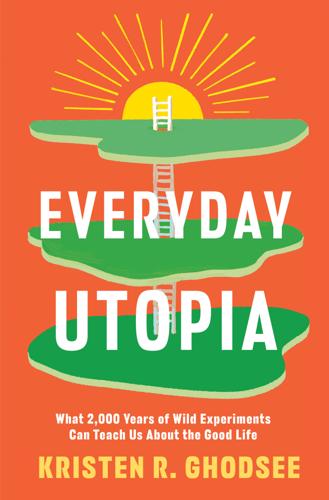
Everyday Utopia: What 2,000 Years of Wild Experiments Can Teach Us About the Good Life
by
Kristen R. Ghodsee
Published 16 May 2023
One 2004 study revealed that while people living in communities with shared treasuries had less economic capital, their lack of material resources was more than compensated for by what the authors called “social,” “human,” and “natural” capital, meaning that community residents benefited from healthier and more stable social relations, more opportunities to develop their unique skills and talents, and more time spent in nature.55 A 2018 study of 913 residents in intentional communities in the United States and Canada found that residents reported levels of personal well-being that were among the highest ever recorded in a multinational comparison group that included thirty-one other representative studies.56 Although you have to consider the selection bias inherent in surveying people who have chosen to live in intentional communities, the authors of the study believed that their findings supported “the contention that sustainability, in the form of a communal lifestyle of a low ecological footprint, may be promoted without forfeiting well-being.”57 As in cohousing communities, it may also be that women particularly benefit from living in intentional communities, where their domestic labors are valued as work and where shared chores create time savings through economies of scale.
…
chapter_num=64#book-reader. 19 Ben Steverman, “Trillions Will Be Inherited Over the Coming Decades, Further Widening the Wealth Gap,” Los Angeles Times, November 29, 2019, https://www.latimes.com/business/story/2019-11-29/boomers-are-thriving-on-an-unprecedented-9-trillion-inheritance. 20 “Almost One Third of All Wealth in the UK Is Inherited, Rather Than Earned,” Inequality Briefing, http://inequalitybriefing.org/graphics/inequality_briefing_26.pdf. 21 Robert Nozick, Anarchy, State, and Utopia (New York: Basic Books, 2013), 152. 22 Christine Kearney, “Encyclopaedia Britannica: After 244 Years in Print, Only Digital Copies Sold,” Christian Science Monitor, March 14, 2012, https://www.csmonitor.com/Business/Latest-News-Wires/2012/0314/Encyclopaedia-Britannica-After-244-years-in-print-only-digital-copies-sold. 23 Encyclopaedia Britannica subscription page: https://www.subscription.britannica.com/subscribe. 24 Monica Anderson, Paul Hitlin, and Michelle Atkinson, “Wikipedia at 15: Millions of Readers in Scores of Languages,” Pew Research Center, January 14, 2016, https://www.pewresearch.org/fact-tank/2016/01/14/wikipedia-at-15/. 25 Friedrich Engels, The Origin of the Family, Private Property, and the State, Project Gutenberg, https://www.gutenberg.org/ebooks/33111. 26 Graeber and Wengrow, The Dawn of Everything. 27 “Frequently Asked Questions,” Hutterites, http://www.hutterites.org/day-to-day/faqs/. 28 “An interview with Manitoba Hutterite Linda Maendel,” Amish America, October 12, 2011, https://www.amishamerica.com/manitoba-hutterite-linda-maendel/. 29 “Community of Goods,” Maine Shakers, https://www.maineshakers.com/about/#ourbeliefs. 30 Peggy Grodinsky, “Maine Voices Live: Brother Arnold Talks About the Shaker Life, Spiritual and Otherwise,” Portland Press Herald, December 11, 2019, https://www.pressherald.com/2019/12/11/maine-voices-live-brother-arnold-talks-about-the-shaker-life-spiritual-and-otherwise/. 31 Website of the Bruderhof: https://www.bruderhof.com/en. 32 Sam Wollaston, “ ‘Just Don’t Call It a Cult’: The Strangely Alluring World of the Bruderhof,” The Guardian, July 23, 2019, https://www.theguardian.com/tv-and-radio/2019/jul/23/just-dont-call-it-a-cult-the-strangely-alluring-world-of-the-bruderhof. 33 “Audit Technique Guide—Apostolic Associations—IRC Section 501(d),” IRS, https://www.irs.gov/pub/irs-tege/atg_apostolic_associations.pdf. 34 “Audit Technique Guide—Apostolic Associations—IRC Section 501(d).” 35 Samuel Brunson, “Taxing Utopia,” LAW eCommons, Loyola University Chicago, 2016, https://www.lawecommons.luc.edu/cgi/viewcontent.cgi?article=1572&context=facpubs. 36 Edward SanFilippo, “A Legal Alternative to Modern Living in a Changing America,” JURIST, January 31, 2012, https://www.jurist.org/commentary/2012/01/edward-sanfilippo-intentional-community/. 37 Website of the Global Ecovillage Network: https://www.ecovillage.org. 38 “Ecovillages,” Foundation for Intentional Community, https://www.ic.org/directory/ecovillages/; Website of the Federation of Egalitarian Communities: https://www.thefec.org/about/. 39 “About,” Tamera, https://www.tamera.org/about/. 40 “How We’re Funded,” Tamera, https://www.tamera.org/how-were-funded/. 41 “Terra Nova,” Tamera, https://www.tamera.org/terra-nova/. 42 Dave Darby, “The Yamagishi Association: Successful, Moneyless, Leaderless Network of Communes in Japan and Elsewhere,” Lowimpact, November 17, 2015, https://www.lowimpact.org/the-yamagishi-association-successful-moneyless-leaderless-network-of-communes-in-japan-and-elsewhere/. 43 Website of the Konohana Family: https://www.konohana-family.org/en/. 44 Wang Xuandi, “In China’s New Age Communes, Burned-Out Millennials Go Back to Nature,” Sixthtone.com, January 15, 2021, https://www.sixthtone.com/news/1006694/in-chinas-new-age-communespercent2C-burned-out-millennials-go-back-to-nature. 45 Huizhong Wu, “City Dwellers Find Simpler Life in Rural China Commune,” Reuters, December 30, 2019, https://www.reuters.com/article/us-china-commune-widerimage/city-dwellers-find-simpler-life-in-rural-china-commune-idUSKBN1YY00V. 46 Isabel Kershner, “The Kibbutz Sheds Socialism and Gains Popularity,” New York Times, August 27, 2007, https://www.nytimes.com/2007/08/27/world/middleeast/27kibbutz.html. 47 Dafna Shermer, “Kibbutz Life: Love It but Leave It?”
…
showall=1. 53 Jessica Ravitz, “Utopia: It’s Complicated Inside New-Age and Vintage Communes,” Great American Stories, CNN, September 2015, https://www.cnn.com/interactive/2015/09/us/communes-american-story/. 54 Twin Oaks Property Code: https://www.twinoaks.org/policies/property-code#pre-existing-assets. 55 Kenneth Mulder, Robert Costanza, and Jon Erikson, “The Contribution of Built, Human, Social and Natural Capital to Quality of Life in Intentional and Unintentional Communities,” Ecological Economics 59, no. 1 (February 2006): 13–23. 56 Bjørn Grinde, Ragnhild Bang Nes, Ian F. MacDonald, and David Sloan Wilson, “Quality of Life in Intentional Communities,” Social Indicators Research 137, no. 2 (June 2018): 625–40. 57 Grinde et al., “Quality of Life in Intentional Communities.” 58 Jenny Odell, How to Do Nothing: Resisting the Attention Economy (New York: Melville House, 2019). 59 Website of Little Free Library: https://www.littlefreelibrary.org. Chapter 6: Shall I Compare Thee to a Violent Ape?
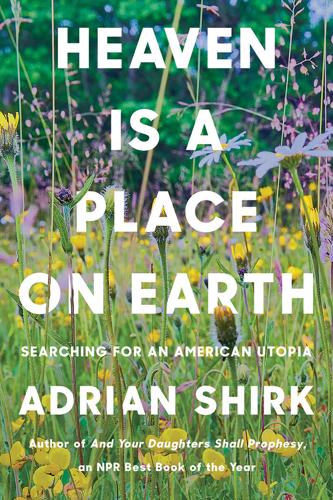
Heaven Is a Place on Earth: Searching for an American Utopia
by
Adrian Shirk
Published 15 Mar 2022
That, too, remained Owenite-inspired for exactly one year before they disinvested and incorporated as a regular small town, with a railroad stop. It also became the site of one of the most radical liberal arts colleges in America, Antioch College, the alma mater of Coretta Scott King, as well as the place where the term “intentional community” first emerged in the 1940s when the Foundation for Intentional Community—still the single largest organization in the country working to “promote peaceful, cooperative living arrangements”—planted its headquarters. As I read more of Young’s work, I realize we are both awed by the same sorts of things: she understands the layering and paradox inherent in the histories of American utopianism(s), how the opposite of what is hoped for is always near to her, near to Rapp, to Lee, to Brigham Young (of whom she is a descendant).
…
They were dredging themselves from the slime of a violent empire and trying to simplify the means of production, simplify the world down to a single element, because they could not square their understandings of God or heaven or the good life or the eschaton with all of this trauma, all of this horror, all of this will toward torture and conquest, coursing through their veins like the River Styx. utopianotes Lost Valley Intentional Community I’m seventeen, and my friend Maggie and I have both graduated from high school early. The week after our commencement ceremony, I get my first full-time job at a paper goods store and feel miserable, and she leaves Portland for three months to study permaculture at an intentional community outside of Eugene called Lost Valley. She shaves her head. I take a Greyhound down to visit her, winding in and out of the old-growth forests along the Cascades.
…
In elementary school, our annual fieldtrip was to the salmon ladder at the nearby Bonneville Dam, where we learned about ecological and indigenous social destruction wrought by the infrastructure, and the measures that state was taking to reverse the damage. In high school, the kind of thing we did was borrow someone’s parents’ 1986 Volvo to drive across the Willamette River to the wooded land trust behind Lewis and Clark’s campus where a student-led intentional community had developed, and where we sat by fire pits or drum circles or went naked into a cob sauna, and maybe drank a beer. There were intentional communities everywhere. Or there were enough casual references to them that their existence seemed ordinary and reasonable. Tellingly, I think, my experiences of teenaged unrequited love are marked indelibly by the crossfire of these weird social conditions, bound up in a daytrip I took with a crush to a hot spring on an Indian reservation.
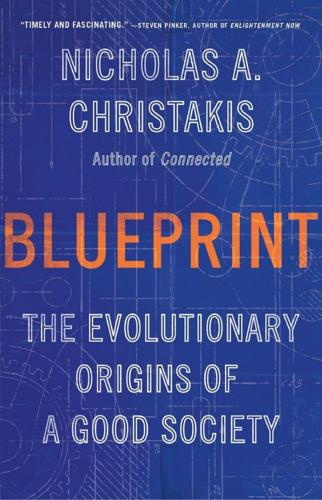
Blueprint: The Evolutionary Origins of a Good Society
by
Nicholas A. Christakis
Published 26 Mar 2019
To find out more, go to hachettespeakersbureau.com or call (866) 376-6591. ISBN 978-0-316-23005-6 E3-20190305-JV-PC-COR Contents Cover Title Page Copyright Dedication Preface Our Common Humanity Chapter 1 The Society Within Us Chapter 2 Unintentional Communities Chapter 3 Intentional Communities Chapter 4 Artificial Communities Chapter 5 First Comes Love Chapter 6 Animal Attraction Chapter 7 Animal Friends Chapter 8 Friends and Networks Chapter 9 One Way to Be Social Chapter 10 Remote Control Chapter 11 Genes and Culture Chapter 12 Natural and Social Laws Photos Acknowledgments About the Author Also by Nicholas A.
…
When you put a group of people together, if they are able to form a society at all, they make one that is, at its core, quite predictable. They cannot create any old sort of society they want. Humans are free to make only one kind of society, and it comes from a specific plan. Evolution has provided a blueprint. CHAPTER 3 Intentional Communities Near the end of March 1845, Henry David Thoreau borrowed an ax from a friend and shipwrecked himself, so to speak, on the shore of Walden Pond, in Concord, Massachusetts. He wanted to conduct an experiment in solitary living. He started by felling trees to make a small cabin furnished with three chairs—“one for solitude, two for friendship, three for society”—though his extra chairs were rarely occupied.1 He grew his own food, considered eating woodchucks raw, read widely in multiple languages, and harbored runaway slaves.
…
From countless nineteenth-century American utopias to twentieth-century Israeli kibbutzim and other examples we will now review, most such experiments have failed, usually within a year or two. It can hardly be insignificant that the great majority of these experiments have been utter flops.10 Even so, these natural experiments help us see which features of social organization recur and are crucial for success. While intentional communities have sometimes succeeded in forming social arrangements that temporarily deviate from the social suite, most have not. Few, if any, have achieved anything radically alien. American Utopian Experiments In 1516, Thomas More coined the word utopia from Greek root words that mean “no place” but that in English also sound like the roots for “good place”—a telling ambiguity, given the failure of so many attempts at utopian societies.11 America has been especially fertile ground for communal utopian efforts, and they have left a mark on society.
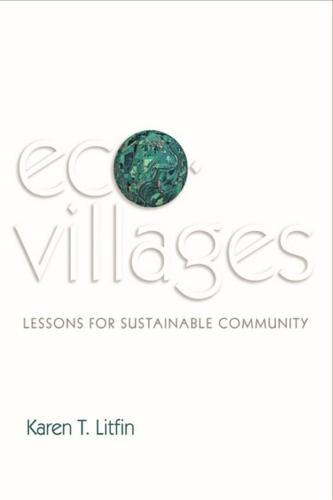
Ecovillages: Lessons for Sustainable Community
by
Karen T. Litfin
Published 16 Dec 2013
The 400 participants established GEN and its three regional centers: GEN-Europe and Africa, the Ecovillage Network of the Americas, and GEN-Oceania and Asia. Yaacov Oved, a scholar and member of Israel’s kibbutz movement, traces GEN to a larger process of “globalization from below,” which includes a growing interest in international relations among intentional communities since the 1970s.5 Since the 1990s, this process has been greatly facilitated by the internet revolution. The original vision of GEN – that new ecovillages would sprout like mushrooms – has not taken place. Instead, the primary impact of ecovillages has been to make existing communities look more like ecovillages through educational programs offered all over the world.
…
US consumer debt, which excludes real estate debt, tallies up to US$2.4 trillion – about US$8,000 for every man, woman and child, with car loans accounting for about 67 percent of the total. Low-income people spend a far higher portion of their income on transportation than those with average incomes. 7 For information on legal entities for owning property in the United States, see Diana Leafe Christian, Creating a Life Together: Practical Tools to Grow Ecovillages and Intentional Communities, Canada: New Society, 2003. 8 Bernard Lietaer, The Future of Money: Creating New Wealth, Work, and a Wiser World, London: Century, 2002. 9 Lietaer’s elaborate website, Currency Solutions for a Wiser World, is an excellent source of information on complementary currencies. See www.lietaer.com, accessed June 20, 2013. 10 For an eye-opening overview of this process, see “Money as Debt,” www.youtube.com/watch?
…
In most of the ecovillages I visited, the social skill set of choice is nonviolent communication.5 NVC is a compassionate approach to communication devised by psychologist Marshall B. Rosenberg. It has been applied in many contexts, from corporate boardrooms to war-torn countries, and it seems ideally suited to intentional communities. The gist of NVC is to foster empathy, both for others and oneself, by speaking to the underlying needs and feelings of all parties. When the life-alienating language of shame and blame gives way to the life-enhancing language of honesty and compassion, conflict becomes the gateway to a deeper sense of connection.
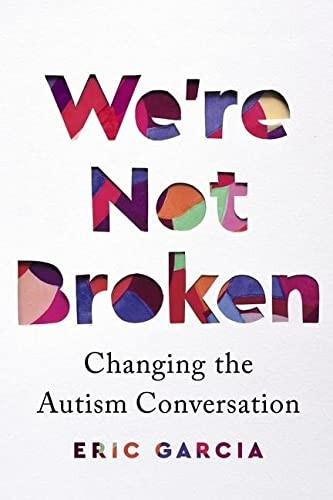
We're Not Broken: Changing the Autism Conversation
by
Eric Garcia
Published 2 Aug 2021
Lutz also quoted David Mandell, the professor at Penn who surveyed a state hospital (and who has coauthored many of the studies in this chapter), who told her that there is no data proving that living in apartments is safer than living in an intentional community. But Julia Bascom disagrees. Many of these places are essentially neo-institutions that are “shot-for-shot recreations of the first institutions,” she said. “I think if someone thinks an intentional community is so great, they should go live in one. But it’s usually not the disabled people asking for them,” Bascom told me. Bascom’s colleague Sam Crane has also said that they are still isolating because they are “designed so that people have no need to leave the campus on a daily basis except on group trips.”
…
which supporters describe: “Intentional or ‘Campus’ Communities for Adults with Autism and Developmental Disabilities,” Autism Society San Francisco Bay Area, 2020, https://www.sfautismsociety.org/list-of-intentional-communities.html. nothing like the institutions of old: “Full Committee Meeting,” Interagency Autism Coordinating Committee, January 16, 2019, https://iacc.hhs.gov/meetings/iacc-meetings/2019/full-committee-meeting/january16/transcript_011619.pdf. there is no data proving: Lutz, “Adults with Disabilities.” “I think if someone thinks an intentional community”: Julia Bascom, interview with the author, 2020. “designed so that people have no need to leave the campus”: Shannon Des Roches Rosa, “Autism and Adult Housing Choices: Separating Myths from Facts,” Thinking Person’s Guide to Autism, August 22, 2016, http://www.thinkingautismguide.com/2016/08/autism-and-adult-housing-choices.html.
…
She added that one of her fears was that when she and her husband were no longer able to care for Jonah, he would end up in his own apartment with an aide who wasn’t adequately paid and thus didn’t properly care for him. Similarly, in 2016, Paul Solotaroff, the father of an autistic young man, expressed his frustration with the rule in a longform piece in Rolling Stone, which said CMS’s rule “launched a strike on intentional communities,” a term many supporters of these types of settings use. It also quoted Jill Escher, who was then president of the Autism Society San Francisco Bay Area (and who would later become a founding member of NCSA), who accused Medicaid of making the rule to cut financial costs. “They took a look at their budget costs and said, ‘To hell with them.

EcoVillage at Ithaca Pioneering a Sustainable Culture (2005)
by
Liz Walker
Published 20 May 2005
. — Hildur Jackson, ecovillage designer, cofounder of Gaia Trust and the Global ecovillage Network, and author of Ecovillage Living: Restoring the Earth and her People This thoughtful, candid look at a successful ecovillage by one of its cofounders is a must-read for anyone seriously interested in starting his or her own ecovillage or intentional community. — Diana Leafe Christian, author of Creating a Life Together: Practical Tools to Grow Ecovillages and Intentional Communities NEW SOCIETY PUBLISHERS Cataloging in Publication Data: A catalog record for this publication is available from the National Library of Canada. Copyright © 2005 by Liz Walker. All rights reserved. Cover design by Diane McIntosh.
…
It would take many books to describe our history, our individual stories, and our collective experiences from the last 13 years. I write from my own lived experience, and in some cases I use pseudonyms to protect the privacy of community members who share their vulnerable moments on these pages. The book will not show you how to create an ecovillage or intentional community. Nor will it explore our legal, financial, or organizational strategies. Other books can do that (for example, see Diana Leafe Christian’s excellent book Creating a Life Together [New Society, 2003]). Instead I offer you Introduction 5 glimpses into our way of life and stories that illuminate our path — from the original vision that set us upon this road to the joys and struggles of living in community.
…
After an agonizing month of confusion, we broke up. I spent many days crying on the shoulders of friends as we walked our 20 miles, trying to figure out what had gone wrong. It was an excruciatingly painful time. Meanwhile the Walk went on. During the course of our nine-month trek, we visited a number of intentional communities, Arcosanti (near Flagstaff, Arizona) being the most famous. Paolo Soleri, an Italian architect, founded the community. Inspired by the Italian hill villages where he had grown up, Soleri had envisioned creating a city for 5,000 people in one huge interconnected building. Fertile gardens and wilderness area were to surround the settlement.
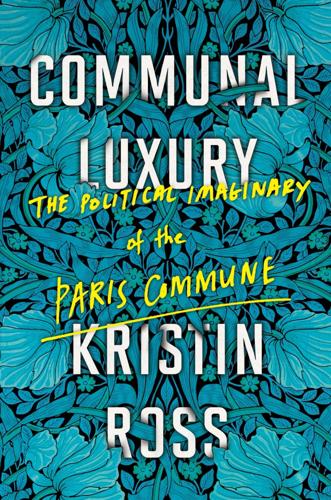
Communal Luxury: The Political Imaginary of the Paris Commune
by
Kristin Ross
Published 6 Apr 2015
Taking its direction from the imaginary of the Paris Commune, it seeks, in Kropotkin’s words, “to extend itself, to universalize itself … In place of communal privileges it has put human solidarity.”2 It was on this point—the danger of isolation—that Kropotkin and Reclus reached the most agreement. Both deemed the overwhelming problem the medieval free city confronted to be identical to the problem Marx saw confronting the Russian rural commune: its susceptibility to destruction due to isolation. The very same danger held true for present-day attempts to create “intentional communities”—on this, Morris, Reclus, and Kropotkin all concurred. Thus Morris’s principal quarrel with the anarchists in London centered on what he saw to be their conviction that an isolated, rural, communitarian life founded on egalitarian principles constituted a panacea. “You could not live communalistically,” he wrote to them in 1889, “until the present society of capitalism or contract is at an end … and it is because I know that this cannot be brought about as long as private property exists, that I desire the abolition of private property, and am a Communist.”3 Reclus and Kropotkin shared Morris’s skepticism—even hostility—to the idea of intentional micro-societies, or isolated anarchist retreats.
…
The person who had resolved to change the world has been transformed into nothing more than a simple grocer.8 In the last chapter, we saw how thinking of the Paris Commune in terms of the classic unities of tragedy risked isolating it from its conceptual and political after-lives. In the same fashion, Reclus and others eschew the utopian commune insofar as it risks creating enclaves of isolation within a larger exploitative society that remains unchanged. Kropotkin draws many of the same conclusions as Reclus regarding small “intentional communities,” using different examples. Surveying all the previous attempts to found communist communes, he pronounces them unequivocal failures. In his view failure can be attributed to three factors: a quasi-religious enthusiasm governing their foundation; an overly intimate structure modeled on the family; and isolation from intellectual centers, contact with larger society, and with the inspiration of art and science.
…
See also the Paris Commune, Relations with Countryside; Land; Peasantry Clément, Jean-Baptiste, 40 Cloots, Anacharsis, 23 Coghlan, Michelle, 102–3 Colonialism, 32–35, Commonweal, 76, 86, 98, 106, 113 communal luxury, 1, 4–5, 39, 45, 50, 58–61, 63–5, 70, 128, 137, 142 commune-form, 23–4, 25–6, 29, 73, 74, 82–9, 94, 99, 104–7, 111–16, 117–42. See also Anarchist Communism; Artel; decentralization; federation; Iceland; intentional communities; land, collective ownership of; Mir; Obshina and the Paris Commune, 5, 11, 14, 19–21, 27–9, 35, 71–3, 78–80, 82–9, 94, 99 as slogan, 19, 20, 95, 97 communism, communists, 64, 78, 82–3, 88, 99, 107, 109–12, 118–19, 127, 133, 135, 142 Comte, Auguste, 133 cooperation, 1, 5, 72–3, 132–3 cooperatives, 24–5, 27–8, 121–2 Corot, Jean-Baptiste-Camille, 44 Courbet, Gustave, 4, 23, 40, 44–5, 50, 53 Crane, Walter, 97 Creagh, Ronald, 135 d’Alix, Chevalier, 14, 30 Dalotel, Alain, 6, 15n, 19n Danton, Georges, 100 Darwin, Charles, 71–2, 89, 133 Daumier, Honoré, 44 Dautry, Jean, 15n decentralization, 4, 19, 20, 35, 59, 74, 111–16, 126–7, 141–2.
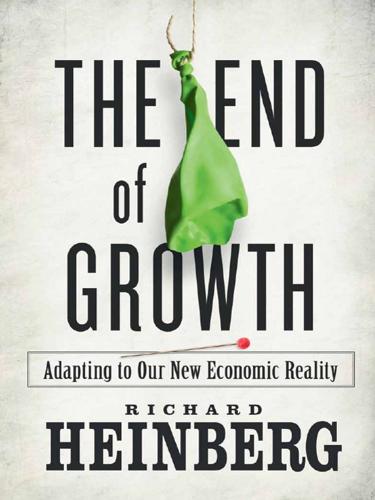
The End of Growth: Adapting to Our New Economic Reality
by
Richard Heinberg
Published 1 Jun 2011
Founded about 15 years ago by a small group of recent West Coast college graduates, Dancing Rabbit is an intentional community of about 50 people set amid the hills and prairies of rural northeastern Missouri. The stated goal of its residents is “to live ecologically sustainable and socially rewarding lives, and to share the skills and ideas behind that lifestyle.”20 Members of the community explore natural building, ecological food systems, and consensus decision-making; they have a vehicle co-op, a co-op healthcare fund, and guest space for visitors. By all accounts, the experiment is going well. Having lived for years in intentional communities (back when I was younger and had more time on my hands), I know the challenges — and the rewards.
…
Many communities fall by the wayside. Only a tiny fraction of the global population is involved in ecovillages or intentional communities, so we can’t realistically expect this strategy to solve the world’s problems. Nevertheless, thousands of such projects are making a go of it, and yielding useful knowledge and experience in the process.21 The future may not look exactly like Dancing Rabbit, but it’s easy to imagine worse outcomes and perhaps hard to think of much better ones. Apart from intentional communities, there are thousands of organizations, companies, and individuals devoted to finding a path to sustainability — a way of life that will work not just for us, but for the seventh generation hence.
…
John Michael Greer, The Ecotechnic Future: Envisioning a Post-Peak World (Gabriola Island, BC: New Society, 2009), p. 76. 20. Dancing Rabbit Ecovillage, dancingrabbit.org. 21. Diana Leafe Christian, Finding Community: How to Join an Ecovillage or Intentional Community (Gabriola Island, BC: New Society, 2007) and Creating a Life Together: Practical Tools to Grow Ecovillages and Intentional Communities (Gabriola Island, BC: New Society, 2003); Communities: Life in Cooperative Culture Magazine, communities. ic.org; Global Ecovillage Network, gen.ecovillage.org. 22. You can also access a trove of articles about them through YES!
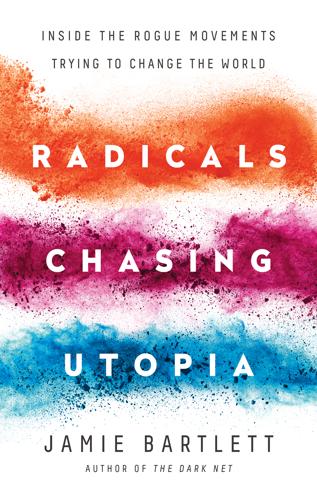
Radicals Chasing Utopia: Inside the Rogue Movements Trying to Change the World
by
Jamie Bartlett
Published 12 Jun 2017
They are usually an effort to develop ways of living that don’t trash the earth, and some have a spiritual element too, such as trying to create a way of life that people find meaningful. Although such communities have always existed, the eco-village movement formally started in the 1970s. In the mid-1990s the Global Ecovillage Network was founded to encourage the growth of the model. According to the Intentional Community Directory there are currently 2,255 eco-village communities around the world, spread across seventy countries and covering everything from a network of remote villages in Sri Lanka to the very popular Cristiana in Copenhagen, a self-proclaimed autonomous commune of 850 people founded by hippies, squatters and anarchists in 1971.
…
The seventeenth-century Diggers, with their dreams of small, independent, egalitarian agricultural communities, began during the great political and social unrest of the English Civil War.11 During the anxiety and strains that followed the Napoleonic Wars, social reformer Robert Owen imagined ‘villages of cooperation’ that would be economically and socially self-sufficient.12 The 1970s saw a surge in communal utopias (approximately 750,000 Americans lived in communes during that decade), some members of which were disappointed hippies, but many were explicitly driven by a fear of an impending apocalypse and energy meltdown, including the New Atlantis Commune and the Genesis Project.13 These are uncertain times too. According to the Intentional Community Directory, over 300 new eco-villages were founded in the first ten months of 2016. For a commune to reach full autonomy is extremely difficult. In the 1990s a group of researchers at the Centre for Alternative Technology in Wales calculated it would take 600 adults to create a reasonably modern functioning community that doesn’t depend on the outside world.
…
In the 1990s a group of researchers at the Centre for Alternative Technology in Wales calculated it would take 600 adults to create a reasonably modern functioning community that doesn’t depend on the outside world. (They worked out that 220 different roles would need filling in eleven general sectors—agriculture, crafts, arts, sports, estate management, services, health, education, commercial, technical and industrial—and each role would usually need more than one person.) Intentional community-building like Tamera is not easy. It takes a lot of work to make these places succeed, including plenty of technical know-how. In 2006 Dylan Evans, a successful academic worried about imminent societal collapse, decided to build a small self-sufficient community in the Scottish Highlands. His dreams of a friendly, meaningful and harmonious commune quickly evaporated in a fog of tedious digging, damp yurts and lazy free-riding idealists.
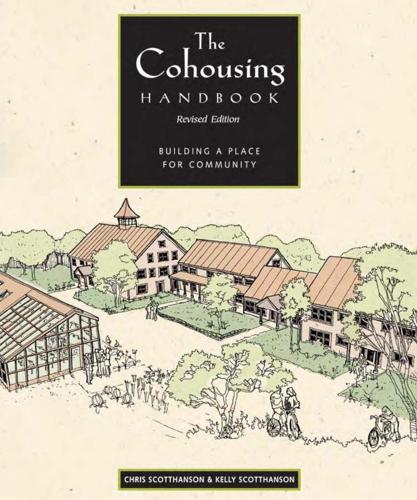
The Cohousing Handbook: Building a Place for Community
by
Chris Scotthanson
and
Kelly Scotthanson
Published 1 Nov 2004
And of course, cohousing is not a commune. How does cohousing fit into the community movement? Living in cohousing is experiencing life in community. But is it another form of “intentional community”? Yes, we think it is — but with a different ownership structure. In cohousing, people intend to live together, but the ownership structure allows for private ownership and private control of what is privately owned. Intentional communities are usually based on an ideology, and sometimes on charismatic leadership, often sharing a common purpose or a common religion, for instance. They often emphasize community at the expense of privacy.
…
. — Shelley Penner, BID, Founding Member and Director, Eco Design Resource Society If you yearn to live in a cohousing community, before you organize your first meeting, write your first check, or visit your first site, bone up on this indispensable how-to guide. Its vital, practical information will empower your group, increase your confidence, and improve the chances that your dream community will actually get built‹and on time and on budget! —Diana Leafe Christian, author of Creating a Life Together: Practical Tools to Grow Ecovillages and Intentional Communities, editor of Communities magazine Cohousers are partners in a unique development process, and this book is the perfect handbook to guide that process. Cohousers must achieve some measure of fluency as “resident developers” in order to constructively contribute — with The Cohousing Handbook, Chris and Kelly have provided essential tools to make it all possible. — Bruce Coldham, Coldham Architects Kelly and Chris wrote this eminently practical book to summarize everything they have learned about making cohousing work in 20 years of doing it.
…
Index C A Cardiff Place (Victoria B.C.), 48 accountant, role of, 52 approval process, 245–246 administrative policies, 176–178, costs, 61, 175–176, 188 269–272 membership documents, 275–276 advertising. see marketing sample unit size table, 202 affordability, 8, 129–132, 191–193 timeline, 67, 235 agenda, sample, 273 carpeting, 162 American Institute of Architects cars (AIA), 60 impact of, 150–152 appraised value, 53, 194–195, 200, 201 parking, 4, 33, 126, 127 appraiser, 53, 194–195 roads and access, 88, 243–244 architect cash flow plan, 180, 187–189 fees, 61–62 childcare role of, 53, 55–56, 97, 194 licensed facility, 242 selection process, 58–60, 118, at meetings, 24–25 123–124 cohousing articles of incorporation, 175 benefits, 15–16, 205–206 association structure, 168 characteristics of, 2–5 B common questions, 2–3, 6–14 banks, 181–182, 189–191 generations of, 128–129 board of directors, 172–173 history, 2–5, 128–129 budget, project, 122–123, 181, kinds of people in, 12–13, 204–205 182–188 optimum community size, 3, 4, 128 builder, role of, 54 Coldham, Bruce, 233 building materials collateral, definition, 180 and affordability, 130–131 colors of empowerment, 26–27 and architects, 55 commitment selection of, 149, 160–163 participation, 12–13 building permits, 237–250 thresholds of, 44–45 bylaws, 175–176, 263–269 283 284 THE COHOUSING HANDBOOK of time and money, 9, 30–32, 179–180 committee structure, 34–35 common facilities common house, 127–128, 138–140 common house kitchen, 239–241 examples of, 10, 115–116 furnishing committee, 261–262 sample design program, 100–113 size of, 128–129 communication techniques, 37–38, 222–223 community, creating group identity, 8–10, 19–21 key design issues, 125–128 community size, optimum, 3, 4, 128 condominium associations, 7–8, 10, 171 conflict resolution, 32–33, 36–38 construction contingency fund, 254–255 cost, 122–123, 163–164 design changes, 253–254 environmental issues, 149, 164 loan, 180 materials, 55, 130–131, 149, 160–163 schedule, 251–253 self-building, 11, 44–46, 51 sweat equity, 193, 254 construction documents, 94, 122 construction lender, 195 construction supervision, 94, 123 contractors, 40, 54, 195 contracts, standard, 60 cooperative associations, 7, 11, 171–172 co-op housing, 3 corporations, 169–171, 174–178 cost, definition, 180, 193–194 costs. see also financial planning appraisal fees, 53 architectural fees, 61–62 compared to standard, 180, 183–187 customized units, 146–147, 193 developers fees, 46 development, 86–91 infrastructure, 158 nonstandard materials, 149, 160–163 project budget, 122–123, 181, 182–188 reducing, 129–132, 187, 191–193 Critical Path Method (CPM), 233, 234–235 D Danish cohousing, 2–5, 126, 127, 128–129, 159 database records, 227 decision log, 25–27 decision-making defining expectations, 68–74 making changes, 118 methods, 30–31, 38 minimizing litigation, 172–173 and trust, 33–35 design process. see also site planning affordability, 8, 129–132, 191–193 development, 94, 121–122 elements of, 93–94 meetings, 95–97 programming, 57, 93, 97–118 Request for Proposal (RFP), 57–59 INDEX workshop, 94, 114–117 design program. see programming developers cohousing product, 47–48 development partner, 40, 46–47 owner-builders, 44–46, 48–49 project control, 39, 91–92 role of, 40–41, 54–55, 194 standard process, 41–43 turnkey project, 48 development consultant, 40, 78–79 development stages, 44–45 documents, organizational, 174–178, 263–276 Doyle Street Cohousing Community (CA), 162–163 draw requests, definition, 180 E ecological sustainability checklist, 150–156 Eco-Village Association of South Surrey (B.C.), 246–248, 249 Eco-Village at Ithaca (NY), 129 ecovillages, 5–6 Edward Weinstein and Associates, 158 engineer, role of, 53–54 environmental issues building materials, 149, 160–163 cars, 150–152 costs, 163–164 ecological sustainability checklist, 150–156 reduce, reuse, recycle, 160–163 site planning, 156–160, 242 site selection, 153–156 estimates, 57–59, 194 F feasibility analysis checklist, 86–91 process, 87–88 financial planning. see also costs appraised value, 53, 194–195, 200, 201 budget, 122–123, 181, 182–188 cash flow plan, 180, 187–189 common costs allocation, 200–201 construction cost, 190–191 contingency fund, 254–255 cost and value, 193–194 Group Financial Statement, 85 investors, outside, 66 land cost, 82, 189 marketing, 208–209 operating money, 30–31, 179, 189–190, 195–196 terminology, 180–181 unit pricing, 90, 181, 197–200 finishes, adhesives and caulks, 161–162 fire and safety, 88–89 firearms, 33 flooring, 160, 162 G Gantt chart, 232–233 gardens, 71 government housing agencies, 47 The Greater Good Round Robin, 38 Gudmand-Høyer, Jan, 128, 129 H Hancock, Bill, 50 health issues, 161–162 hiring professions developers, 46–47, 49–50 285 286 THE COHOUSING HANDBOOK group members, 59–60 Request for Proposal (RFP), 57–59 selection process, 56–57 hot tubs, 23 housing types. see private units I infrastructure, 158 initial organizing agreement, 175, 176–177 insulation, 163 intentional communities, 5 internet sources on cohousing, 8, 263 discussion group, 9 on schedule charts, 233 J Jamaica Plain Cohousing (MA), 100, 132 K kitchen design, 127, 239–241 Kraus-Fitch Architects, 57, 118, 241 L land acquisition timeline chart, 67 contacting owner, 79–81 development costs, 86–91 evaluation, 46, 78–79, 81 financial planning, 66–67, 189 location, 69–72 making an offer, 81–87 mapping process, 68–74 property size, 70, 90–91 site criteria, 65–66, 69–72, 153–156 site selection process, 71, 74–81 land acquisition specialist, 55 landscape architect, 53, 97 land use and zoning approvals, 238, 240–241 checklist, 86–87 issues, 241–250 sample feasibility chart, 249 site plans comparison, 157 zoning maps, 72–74 leadership, 32–33 legal issues advice, 52, 167 documents, 174–178, 263–276 legal entity status, 28–30, 92, 167–174 Limited Liability Company (LLC), 92, 170 liquid assets, 181 loan proceeds, definition, 181 loans. see financial planning lumber, 163 M mapping process, 68–74 marketing advertising, 215 attracting members, 219–221 budget, 208–209 of cohousing, 203–206 common questions, 2–3, 6–12 community relations, 218 media coverage, 212–215, 217, 218–219 planning, 206–208 press kit, 212–215, 277–282 printed materials, 210–214 professional, 54 response management, 215–217, 223 sample events worksheet, 281–282 sample poster, 282 INDEX special events, 214–215 strategies, 209–210, 215–217 website design, 216–217 mark-up, definition, 181 meals, shared, 2, 4 media coverage press kit, 212–215, 277–282 response management, 217, 218–219 sample contact sheet, 280–281 sample fact sheet, 280 sample press release, 277–278 sample quotations, 279 sample suggested questions, 279 meetings brainstorming, 221 colors of empowerment, 26–27 committee structure, 34–35 facilitator’s role, 29, 95 managing, 17–19, 23–25, 28–29 records, 25–27 sample agenda, 273 visualization exercises, 19–20 membership. see also marketing burnout and turnover, 32–33 core group, 6–7, 32–33 criteria, 66, 182 early member incentive plan, 196–197 educating new members, 224–225 fees, 31, 179, 195–196 recruitment, 219–223 sample application and agreement, 275 sample membership policy, 276 selection process, 2, 7, 223–224 surveys, 22–23 waiting lists, 227 Monterey Cohousing Community (MN), 162 mortgage broker, 53, 190 move-in process extra furniture, 261–262 sample information packet, 253–256 schedule, 254–256 Myers-Briggs Type Indicator (MBTI), 21–22, 36 N neighbors, 77, 218 non-profit structures, 169 Nyland Cohousing (CO), 12 O Oak Creek Commons (CA), 132 off-site improvements, 89 overhead, definition, 181 owner-builder, 11, 44–46, 51 ownership structure, 7–8, 10–11, 168–174 P paints, 161–162 parking, 4, 33, 126, 127 participation, 3, 12–13 partnerships, 168–169 pedestrian pathways, 126–127 performance review, 62–63 permanent financing, definition, 181 permits and approvals appeals, 241–242 building departments, 237, 248, 250 building permits, 122, 238–239 common house kitchen, 239–241 land use, 238, 241–250 process examples, 244–249 287 288 THE COHOUSING HANDBOOK project feasibility, 89 types of, 240–241 personality types, 21–22, 36–37 pesticides, 33 pets, 2, 33 Pine Street Cohousing (Amherst MA), 233 Pioneer Valley Cohousing (MA), 46 planning development stages, 44–45 schedule charts, 229–235 plywood and particleboard, 162 points (on a loan), definition, 181 Post-Occupancy Evaluation (POE), 59, 94, 123–124 price, definition, 181 private units customized, 144–148, 193 design examples, 119, 120, 141–146 and the environment, 158–160 housing types, 70, 132–133 number of, 3, 4, 128 rental, 12 resale, 2, 8–9 selection process, 225–227 size, 128–129, 201, 202 standardization, 141–144, 193 unit mix, 10, 226–227 unit pricing, 53, 90, 181, 197–200 professional help consulting, 49–50, 51 fees, 61–62 hiring, 56–60 performance review, 62–63 types needed, 52–56, 164, 194–195 pro forma development, 90, 181, 182 programming (design program) checklist, 114–117 definition, 93 process, 97–99, 117–118 sample common house, 100–113 workshop, 114–117 project budget, 122–123, 181, 182–188 promoters, 40 property transfers, 174 public events, 214–215, 281–282 public service announcements, 214 Puget Ridge Group (Seattle WA), 47 R race and ethnicity, 205 real estate agents, 52 records database, 227 decision log, 25–27 rental agreements, 12 Request for Proposal (RFP), 57–59 resale of unit, 2, 8–9 resources on architects, 118 on cohousing, 8, 263 design process workshop, 114–117 on environmental issues, 163 internet discussion group, 9 on personality types, 21–22 on sample documents, 174–175 on schedule charts, 233 on standard contracts, 60 risk management, 174 roads and access, 88, 243–244 S scheduling. see timeline schematic design, 93–94, 118–120 self-building, 11, 44–46, 51 INDEX The Sentence, 37–38 sewer and septic systems, 243 site planning. see also design process comparative site plans, 159 definition, 96–97 existing trees, 76 goals checklist, 98–99 landscape architects, 53, 97 model construction, 120 options, 138, 156–158 surveyors, 54 WindSong example, 134–137 Skråplanet (Denmark), 128 smoking, 33 soft costs, definition, 181 Soleri, Paolo, 151 South Side Park Group (Sacramento CA), 47 statement of purpose, sample, 274 strata title, 7–8, 10, 171 surveyors, 54 sustainable communities, 164–165 sweat equity, 193, 254 T take-out loans, 181, 195 tax issues advice, 52, 174 needs of the seller, 85 timeline construction schedule, 251–253 land acquisition comparison, 67 major thresholds, 44–45 move-in schedule, 254–256 overview, 9, 229–235 townhouse, sample project, 183–186 Trudeslund (Denmark), 129, 159 turnkey project, 48 U unit pricing, 53, 90, 181, 197–200 units. see private units utilities, 87–88 V value, definition, 181, 193–194 value engineering, 122–123 values and priorities checklist, 24–25 and costs, 164–165 and creative process, 12–14 statement of purpose, 274 vendor financing, definition, 181 vision statement, 9–10, 24–25 voluntary simplicity, 163 W water issues, 88, 242–243 website design, 216–217 WindSong (Vancouver B.C.), 50 common house plan, 140 cost of bylaws, 175 private units design, 141–146, 148 site plan development, 134–137 size of common space, 127–128, 129 timeline, 67, 235, 252–253 Winslow Cohousing (WA) approval process, 244–245 costs, 61 design process, 20, 46, 129 sample documents, 176–177, 274 site planning, 134, 158, 159 timeline, 67, 235 tree removal, 76 wood stoves, 33 working drawings, 94, 122 Z zoning. see land use and zoning 289 About the Authors Chris completed an undergraduate degree in architecture at the University of Washington in 1978.
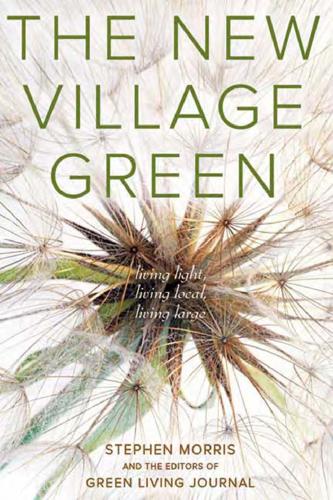
The new village green: living light, living local, living large
by
Stephen Morris
Published 1 Sep 2007
I have no technique for that. The NEW VILLAGE GREEN 243 Why were you first attracted to intentional communities? Because I used to say the only way a person could serve God was in community, though now I can’t even remember why I thought that. I’ve become very disillusioned with communes, mainly because of the amount of time you have to spend on the glue needed to hold one together. After a group reaches a certain size diminishing returns set in and it’s no longer efficient at anything. I was part of an intentional community in Indiana for a year. I couldn’t see any community in the place and I never did find out what its intentions were.
…
Ordinarily, in this section of the country, I gather from sometime in March to sometime in December and – if we happen to have a warm spell – I may even collect volunteer vegetables in January or February. Of course I have done a great deal of gardening. I certainly did when I was in charge of buildings and grounds at a Quaker center called Pendle Hill, an intentional community in Indiana. At that time there were usually 60 to 80 people there and gathering wild food simply wouldn’t have worked. One person just can’t collect enough for a large group. Oh, there are certain things you could gather, yes – like poke – and a few times I foraged enough wild fruits to make jams and desserts for everybody.
…
Yes, I think so and it’s very definitely a part of the general youth revolution. There’s a generation growing up that’s genuinely different, although the difference may not be as drastic or as original as some of them think. I was smoking pot in 1932 and was arrested for inciting to riot in 1934. You’ve had some experience with intentional communities. Why do they interest you? They’ve interested me for a long time, though I’ve done a lot more of almostbecoming-a-member than of actually joining. When we left Hawaii, we were thinking of joining a community of some Quakers – largely to get away from the draft – set up in Monte Verde, Costa Rica.
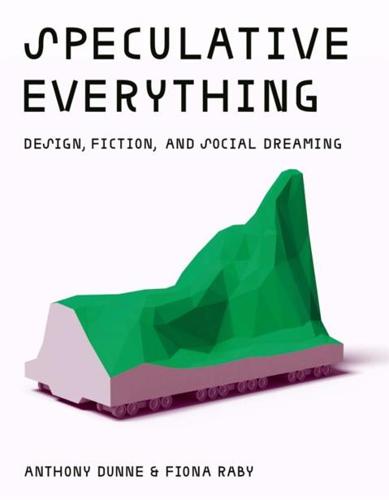
Speculative Everything: Design, Fiction, and Social Dreaming
by
Anthony Dunne
and
Fiona Raby
Published 22 Nov 2013
UTOPIAS/DYSTOPIAS Probably the purest form of fictional world is the utopia (and its opposite, the dystopia). The term was first used by Thomas More in 1516 as the title of his book Utopia. Lyman Tower Sargent suggests utopia has three faces: the literary utopia, utopian practice (such as intentional communities), and utopian social theory ;8 for us, the best are a combination of all three and blur boundaries among art, practice, and social theory. In E nvisioning Real Utopias Erik Olin Wright defines utopias as "fantasies, morally inspired designs for a humane world of peace and harmony unconstrained by realistic considerations of human psychology and social feasibility."9 There is a view that utopia is a dangerous concept that we should not even entertain because Nazism, Fascism, and Stalinism are the fruits of utopian thinking.
…
Due to a throwaway remark in a lecture, AVL-ville attracted unwanted attention from inspectors and the police, creating vast amounts of bureaucracy. Eventually Van Lieshout decided to close AVL-ville so that he could concentrate on producing art works rather than dealing with officials. Perhaps the most successful form of micro-utopia is the intentional community, or its more extreme form, the cult. Our favorite is Panawave. Based in Japan, one of their core beliefs is the harmfulness of electromagnetic radiation, and they go to great lengths to avoid it. Believing that white protects them from harmful rays they cover their vehicles, camps, and personal objects with white fabric.

Dishwasher: One Man's Quest to Wash Dishes in All Fifty States (P.S.)
by
Pete Jordan
Published 1 May 2007
Male hair was short, most everyone was lucid and intelligent and I didn’t hear a lick of jam-band music the whole time. After a few weeks, I found myself asking everyone—both the commune’s residents and the farm’s other visitors—about the rationale and philosophy behind intentional communities. For historical background, someone suggested reading the behaviorist B. F. Skinner’s 1948 novel Walden Two. A tale of a fictional utopian intentional community, it was the influential book that directly—or indirectly—inspired the founding of many communes in the 1960s and ’70s. While reading the farmhouse’s copy of the book by flashlight one night in the van, I came close to dozing off.
…
The resulting milky slop would then be given to the hogs. “Why milk? Water isn’t good enough for rinsing? Sounds like a waste of resources to me!” “I’ve never read the book,” she sighed and then retreated to work a different row of sorghum stalks. By the time I cornered Tess—a woman from a different intentional community who was here to help out during the harvest—I was onto the pot issue. Skinner says that Walden Two is largely self-sufficient; its food is mostly produced on its own land or comes from nearby farms. Preparing all that food from scratch—and not taking it out of a can or box— would dirty more than the average number of pots, pans and cooking utensils.
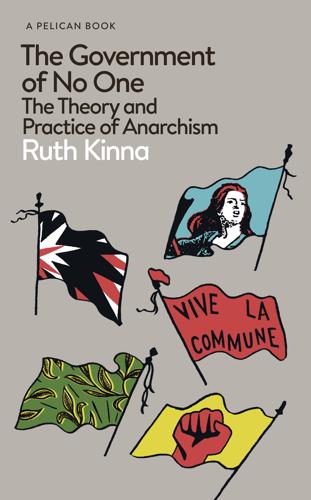
The Government of No One: The Theory and Practice of Anarchism
by
Ruth Kinna
Published 31 Jul 2019
Ackelsberg, Free Women of Spain: Anarchism and the Struggle for the Emancipation of Women (Oakland and Edinburgh: AK Press, 2004) Utopianism and Intentional Community Laurence Davis and Ruth Kinna (eds), Anarchism and Utopianism (Manchester: Manchester University Press, 2014) Dennis Hardy, Alternative Communities in Nineteenth Century England (London: Longman, 1979) Andrew Rigby, Communes in Britain (London: Routledge and Kegan Paul, 1974) Theodore Roszak, Where the Wasteland Ends: Politics and Transcendence in Postindustrial Society (New York: Doubleday, 1972) Lucy Sargisson and Lyman Tower Sargent, Living in Utopia: New Zealand’s Intentional Communities (London: Routledge, 2004) Nigel Todd, Roses and Revolutionists: The Story of the Clousden Hill Free Communist and Co-operative Colony 1894–1902 (Nottingham: Five Leaves, 2015) Zadforever, Revenge Against the Commons, April 2018, online at https://zadforever.blog/2018/04/24/the-revenge-against-the-commons/ CHAPTER 5: PROSPECTS Carne Ross, The Leaderless Revolution: How Ordinary People Will Take Power and Change Politics in the 21st Century (London: Simon & Schuster, 2011) Rojava Michael Knapp, Anja Flach and Ercan Ayboğa, Revolution in Rojava: Democratic Autonomy and Women’s Liberation in Syrian Kurdistan, trans.
…
docId=VAB7013&doc.view=print [last access 16 November 2017]. 37 See Judith Skhlar, ‘The Political Theory of Utopia: From Melancholy to Nostalgia’, Daedalus, 94 (2) (1965), p. 370 [367–81]. 38 Buber, Paths in Utopia, p. 14. 39 Organizational Platform, p. 193. 40 Buber, Paths in Utopia, p. 16. 41 Unusually in agreement with Marx, Kropotkin also questioned the wisdom of setting up intentional communities; not only were they exclusive and often dysfunctional, but they were essentially escape routes rather than instruments of social transformation. Kropotkin modernized socialist utopianism by proposing to use communalization as a means of struggle as well as an end in itself. Matthew Adams, ‘Rejecting the American Model: Peter Kropotkin’s Radical Communalism’, History of Political Thought, 25 (1), pp. 147–73. 42 Peter Kropotkin, The Conquest of Bread [1892](London: Elephant Editions, 1985), p. 192. 43 George Woodcock, New Life to the Land (London: Freedom Press, 1942), p. 3. 44 Harold Bolce, The New Internationalism (New York: D.

The Simple Living Guide
by
Janet Luhrs
Published 1 Apr 2014
Cohousing, Intentional and Communal Living Books Cohousing by Kathryn McCamant, Ellen Hertzman, and Charles Durrett (Berkeley, CA: Ten Speed Press, 1993) Uses as its models intentional communities already in existence in northern Europe, especially the Scandinavian countries. Explains these communities, how they work, and how they were planned (using diagrams and drawings). Because the focus is on existing communities, the information offered leans on practical suggestions. Intentional Communities Directory (Fellowship for Intentional Community and Communities Publications Cooperative, Rutledge, MO, 1990) Source book that lists existing intentional communities across the United States and organizations and groups that support the concept.
…
Box 2584, Berkeley, CA 94702, 1-510-486-2656 Communities Magazine, 138-CR Twin Oaks Road, Lousia, VA 23093, 1-540-894-5126 Communities Magazine: Journal of Cooperative Living, Route 1, Box 155-M, Rutledge, MO Eco Villages is a listing of international communities throughout the United States. Contact them at P.O. Box 11470, Bainbridge Island, WA 98110 Follow the Dirt Road: An Introduction to Intentional Communities in the 1990s is a video by Monique Gauthier, 1 Evergreen Court, Landenberg, PA 19350-9389. Human Investment Project, Inc., 364 S. Railroad Avenue, San Mateo, CA 94401. This organization builds group homes for all kinds of special groups and offers a wide range of resources and programs for lower income people.
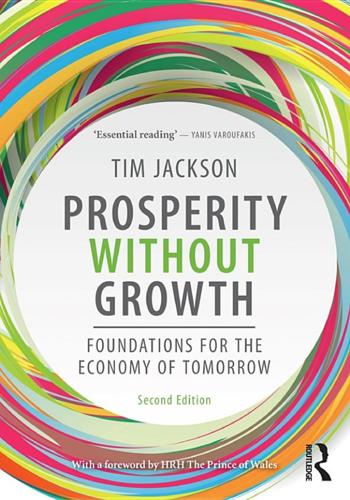
Prosperity Without Growth: Foundations for the Economy of Tomorrow
by
Tim Jackson
Published 8 Dec 2016
This balance between skill and challenge leads to specific psychological state, which Csikszentmihalyi describes as ‘flow’ – a state of heightened focus and immersion in activities such as art, play and work.19 Individual efforts to live more simply are more likely to succeed in a supportive community. And this realisation has led to the emergence of so-called ‘intentional communities’ where people come together under the declared aim of living simpler, more sustainable lives. Some of these initiatives began, interestingly, as spiritual or religious communities, attempting to create a space where people could reclaim the contemplative dimension of their lives that used to be offered by religious institutions.
…
But the findings from studies that do exist are interesting. In the first place, the evidence confirms that ‘simplifiers’ appear to be happier. It is sometimes possible to have more fun with less stuff. Consuming less, voluntarily, can improve subjective wellbeing – completely contrary to the conventional model.26 At the same time, intentional communities remain marginal. The spiritual basis for them doesn’t appeal to everyone, and the secular versions seem less resistant to the incursions of consumerism. Some of these initiatives depend heavily on having sufficient personal assets to provide the economic security needed to pursue a simpler lifestyle.
…
INDEX Locators in italic refer to figures absolute decoupling 84–6; historical perspectives 89–96, 90, 92, 94, 95; mathematical relationship with relative decoupling 96–101, 111 abundance see opulence accounting errors, decoupling 84, 91 acquisition, instinctive 68 see also symbolic role of goods adaptation: diminishing marginal utility 51, 68; environmental 169; evolutionary 226 advertising, power of 140, 203–4 Africa 73, 75–7; life-expectancy 74; philosophy 227; pursuit of western lifestyles 70; growth 99; relative income effect 58, 75; schooling 78 The Age of Turbulence (Greenspan) 35 ageing populations 44, 81 agriculture 12, 148, 152, 220 Aids/HIV 77 algebra of inequality see inequality; mathematical models alienation: future visions 212, 218–19; geographical community 122–3; role of the state 205; selfishness vs. altruism 137; signals sent by society 131 alternatives: economic 101–2, 139–40, 157–8; hedonism 125–6 see also future visions; post-growth macroeconomics; reform altruism 133–8, 196, 207 amenities see public services/amenities Amish community, North America 128 An Inquiry into the Nature and Causes of the Wealth of Nations (Smith) 123, 132 angelised growth see green growth animal welfare 220 anonymity/loneliness see alienation anthropological perspectives, consumption 70, 115 anti-consumerism 131 see also intrinsic values anxiety: fear of death 69, 104, 115, 212–15; novelty 116–17, 124, 211 Argentina 58, 78, 78, 80 Aristotle 48, 61 The Art of Happiness (Dalai Lama) 49 arts, Baumol’s cost disease 171–2 assets, stranded 167–8 see also ownership austerity policies xxxiii–xxxv, 189; and financial crisis 24, 42–3; mathematical models 181 Australia 58, 78, 128, 206 authoritarianism 199 autonomy see freedom/autonomy Ayres, Robert 143 backfire effects 111 balance: private interests/common good 208; tradition/innovation 226 Bank for International Settlements 46 bank runs 157 banking system 29–30, 39, 153–7, 208; bonuses 37–8 see also financial crisis; financial system basic entitlements: enterprise as service 142; income 67, 72–9, 74, 75, 76, 78; limits to growth 63–4 see also education; food; health Basu, Sanjay 43 Baumol, William 112, 147, 222, 223; cost disease 170, 171, 172, 173 BBC survey, geographical community 122–3 Becker, Ernest 69 Belk, Russ 70, 114 belonging 212, 219 see also alienation; community; intrinsic values Bentham, Jeremy 55 bereavement, material possessions 114, 214–15 Berger, Peter 70, 214 Berry, Wendell 8 Better Growth, Better Climate (New Climate Economy report) 18 big business/corporations 106–7 biodiversity loss 17, 47, 62, 101 biological perspectives see evolutionary theory; human nature/psyche biophysical boundaries see limits (ecological) Black Monday 46 The Body Economic (Stuckler and Basu) 43 bond markets 30, 157 bonuses, banking 37–8 Bookchin, Murray 122 boom-and-bust cycles 157, 181 Booth, Douglas 117 borrowing behaviour 34, 118–21, 119 see also credit; debt Boulding, Elise 118 Boulding, Kenneth 1, 5, 7 boundaries, biophysical see limits (ecological) bounded capabilities for flourishing 61–5 see also limits (flourishing within) Bowen, William 147 Bowling Alone (Putnam) 122 Brazil 58, 88 breakdown of community see alienation; social stability bubbles, economic 29, 33, 36 Buddhist monasteries, Thailand 128 buen vivir concept, Ecuador xxxi, 6 built-in obsolescence 113, 204, 220 Bush, George 121 business-as-usual model 22, 211; carbon dioxide emissions 101; crisis of commitment 195; financial crisis 32–8; growth 79–83, 99; human nature 131, 136–7; need for reform 55, 57, 59, 101–2, 162, 207–8, 227; throwaway society 113; wellbeing 124 see also financial systems Canada 75, 206, 207 capabilities for flourishing 61–5; circular flow of the economy 113; future visions 218, 219; and income 77; progress measures 50–5, 54; role of material abundance 67–72; and prosperity 49; relative income effect 55–61, 58, 71, 72; role of shame 123–4; role of the state 200 see also limits (flourishing within); wellbeing capital 105, 107–10 see also investment Capital in the 21st Century (Piketty) 33, 176, 177 Capital Institute, USA 155 capitalism 68–9, 80; structures 107–13, 175; types 105–7, 222, 223 car industry, financial crisis 40 carbon dioxide emissions see greenhouse gas emissions caring professions, valuing 130, 147, 207 see also social care Cat on a Hot Tin Roof (Williams) 213 causal path analysis, subjective wellbeing 59 Central Bank 154 central human capabilities 64 see also capabilities for flourishing The Challenge of Affluence (Offer) 194 change see alternatives; future visions; novelty/innovation; post-growth macroeconomics; reform Chicago school of economics 36, 156 children: advertising to 204; labour 62, 154; mortality 74–5, 75, 206 Chile xxxiii, xxxvii, 58, 74, 74, 75, 76 China: decoupling 88; GDP per capita 75; greenhouse gas emissions 91; growth 99; life expectancy 74; philosophy 7; post-financial crisis 45–6; pursuit of western lifestyles 70; relative income effect 58; resource use 94; savings 27; schooling 76 choice, moving beyond consumerism 216–18 see also freedom/autonomy Christian doctrine see religious perspectives chromium, commodity price 13 Cinderella economy 219–21, 224 circular economy 144, 220 circular flow of the economy 107, 113 see also engine of growth citizen’s income 207 see also universal basic income civil unrest see social stability Clean City Law, São Paulo 204 climate change xxxv, 22, 47; critical boundaries 17–20; decoupling 85, 86, 87, 98; fatalism 186; investment needs 152; role of the state 192, 198, 201–2 see also greenhouse gas emissions Climate Change Act (2008), UK 198 clothing see basic entitlements Club of Rome, Limits to Growth report xxxii, xxxiii, 8, 11–16, Cobb, John 54 collectivism 191 commercial bond markets 30, 157 commitment devices/crisis of 192–5, 197 commodity prices: decoupling 88; financial crisis 26; fluctuation/volatility 14, 21; resource constraints 13–14 common good: future visions 218, 219; vs. freedom and autonomy 193–4; vs. private interests 208; role of the state 209 common pool resources 190–2, 198, 199 see also public services/amenities communism 187, 191 community: future visions of 219–20; geographical 122–3; investment 155–6, 204 see also alienation; intrinsic values comparison, social 115, 116, 117 see also relative income effect competition 27, 112; positional 55–61, 58, 71, 72 see also struggle for existence complexity, economic systems 14, 32, 108, 153, 203 compulsive shopping 116 see also consumerism Conference of the Parties to the UN Framework Convention on Climate Change (CoP21) 19 conflicted state 197, 201, 209 connectedness, global 91, 227 conspicuous consumption 115 see also language of goods consumer goods see language of goods; material goods consumer sovereignty 196, 198 consumerism 4, 21, 22, 103–4, 113–16; capitalism 105–13, 196; choice 196; engine of growth 104, 108, 120, 161; existential fear of death 69, 212–15; financial crisis 24, 28, 39, 103; moving beyond 216–18; novelty and anxiety 116–17; post-growth economy 166–7; role of the state 192–3, 196, 199, 202–5; status 211; tragedy of 140 see also demand; materialism contemplative dimensions, simplicity 127 contraction and convergence model 206–7 coordinated market economies 27, 106 Copenhagen Accord (2009) 19 copper, commodity prices 13 corporations/big business 106–7 corruption 9, 131, 186, 187, 189 The Cost Disease: Why Computers get Cheaper and Health Care Doesn’t (Baumol) 171, 172 Costa Rica 74, 74, 76 countercyclical spending 181–2, 182, 188 crafts/craft economies 147, 149, 170, 171 creative destruction 104, 112, 113, 116–17 creativity 8, 79; and consumerism 113, 116; future visions 142, 144, 147, 158, 171, 200, 220 see also novelty/innovation credit, private: deflationary forces 44; deregulation 36; financial crisis 26, 27, 27–31, 34, 36, 41; financial system weaknesses 32–3, 37; growth imperative hypothesis 178–80; mortgage loans 28–9; reforms in financial system 157; spending vs. saving behaviour of ordinary people 118–19; and stimulation of growth 36 see also debt (public) credit unions 155–6 crises: of commitment 192–5; financial see financial crisis critical boundaries, biophysical see limits (ecological) Csikszentmihalyi, Mihalyi 127 Cuba: child mortality 75; life expectancy 74, 77, 78, 78; response to economic hardship 79–80; revolution 56; schooling 76 Cushman, Philip 116 Dalai Lama 49, 52 Daly, Herman xxxii, 54, 55, 160, 163, 165 Darwin, Charles 132–3 Das Kapital (Marx) 225 Davidson, Richard 49 Davos World Economic Forum 46 Dawkins, Richard 134–5 de Mandeville, Bernard 131–2, 157 death, denial of 69, 104, 115, 212–15 debt, public-sector 81; deflationary forces 44; economic stability 81; financial crisis 24, 26–32, 27, 37, 41, 42, 81; financial systems 28–32, 153–7; money creation 178–9; post-growth economy 178–9, 223 Debt: The First Five Thousand Years (Graeber) 28 decoupling xix, xx, xxxvii, 21, 84–7; dilemma of growth 211; efficiency measures 84, 86, 87, 88, 95, 104; green growth 163, 163–5; historical perspectives 87–96, 89, 90, 92, 94, 95; need for new economic model 101–2; relationship between relative and absolute 96–101 deep emission and resource cuts 99, 102 deficit spending 41, 43 deflationary forces, post-financial crisis 43–7, 45 degrowth movement 161–3, 177 demand 104, 113–16, 166–7; post-financial crisis 44–5; post-growth economy 162, 164, 166–9, 171–2, 174–5 dematerialisation 102, 143 democratisation, and wellbeing 59 deposit guarantees 35 deregulation 27, 34, 36, 196 desire, role in consumer behaviour 68, 69, 70, 114 destructive materialism 104, 112, 113, 116–17 Deutsche Bank 41 devaluation of currency 30, 45 Dichter, Ernest 114 digital economy 44, 219–20 dilemma of growth xxxi, 66–7, 104, 210; basic entitlements 72–9, 74, 75, 76, 78; decoupling 85, 87, 164; degrowth movement 160–3; economic stability 79–83, 174–6; material abundance 67–72; moving beyond 165, 166, 183–4; role of the state 198 diminishing marginal utility: alternative hedonism 125, 126; wellbeing 51–2, 57, 60, 73, 75–6, 79 disposable incomes 27, 67, 118 distributed ownership 223 Dittmar, Helga 126 domestic debt see credit dopamine 68 Dordogne, mindfulness community 128 double movement of society 198 Douglas, Mary 70 Douthwaite, Richard 178 downshifting 128 driving analogy, managing change 16–17 durability, consumer goods 113, 204, 220 dynamic systems, managing change 16–17 Eastern Europe 76, 122 Easterlin, Richard 56, 57, 59; paradox 56, 58 eco-villages, Findhorn community 128 ecological investment 101, 166–70, 220 see also investment ecological limits see limits (ecological) ecological (ecosystem) services 152, 169, 223 The Ecology of Money (Douthwaite) 178 economic growth see growth economic models see alternatives; business-as-usual model; financial systems; future visions; mathematical models; post-growth macroeconomics economic output see efficiency; productivity ‘Economic possibilities for our grandchildren’ (Keynes) 145 economic stability 22, 154, 157, 161; financial system weaknesses 34, 35, 36, 180; growth 21, 24, 67, 79–83, 174–6, 210; post-growth economy 161–3, 165, 174–6, 208, 219; role of the state 181–3, 195, 198, 199 economic structures: post-growth economy 227; financial system reforms 224; role of the state 205; selfishness 137 see also business-as-usual model; financial systems ecosystem functioning 62–3 see also limits (ecological) ecosystem services 152, 169, 223 Ecuador xxxi, 6 education: Baumol’s cost disease 171, 172; and income 67, 76, 76; investment in 150–1; role of the state 193 see also basic entitlements efficiency measures 84, 86–8, 95, 104, 109–11, 142–3; energy 41, 109–11; growth 111, 211; investment 109, 151; of scale 104 see also labour productivity; relative decoupling Ehrlich, Paul 13, 96 elasticity of substitution, labour and capital 177–8 electricity grid 41, 151, 156 see also energy Elgin, Duane 127 Ellen MacArthur Foundation 144 emissions see greenhouse gas emissions employee ownership 223 employment intensity vs. carbon dioxide emissions 148 see also labour productivity empty self 116, 117 see also consumerism ends above means 159 energy return on investment (EROI) 12, 169 energy services/systems 142: efficiency 41, 109–11; inputs/intensity 87–8, 151; investment 41, 109–10, 151–2; renewable xxxv, 41, 168–9 engine of growth 145; consumerism 104, 108, 161; services 143, 170–4 see also circular flow of the economy enough is enough see limits enterprise as service 140, 141–4, 158 see also novelty/innovation entitlements see basic entitlements entrepreneur as visionary 112 entrepreneurial state 220 Environmental Assessment Agency, Netherlands 62 environmental quality 12 see also pollution environmentalism 9 EROI (energy return on investment) 12, 169 Essay on the Principle of Population (Malthus) 9–11, 132–3 evolutionary map, human heart 136, 136 evolutionary theory 132–3; common good 193; post-growth economy 226; psychology 133–5; selfishness and altruism 196 exchange values 55, 61 see also gross domestic product existential fear of death 69, 104, 115, 212–15 exponential expansion 1, 11, 20–1, 210 see also growth external debt 32, 42 extinctions/biodiversity loss 17, 47, 62, 101 Eyres, Harry 215 Fable of the Bees (de Mandeville) 131–2 factor inputs 109–10 see also capital; labour; resource use fast food 128 fatalism 186 FCCC (Framework Convention on Climate Change) 92 fear of death, existential 69, 104, 115, 212–15 feedback loops 16–17 financial crisis (2008) 6, 23–5, 32, 77, 103; causes and culpability 25–8; financial system weaknesses 32–7, 108; Keynesianism 37–43, 188; nationalisation of financial sector 188; need for financial reforms 175; role of debt 24, 26–32, 27, 81, 179; role of state 191; slowing of growth 43–7, 45; spending vs. saving behaviour of ordinary people 118–21, 119; types/definitions of capitalism 106; youth unemployment 144–5 financial systems: common pool resources 192; debt-based/role of debt 28–32, 153–7; post-growth economy 179, 208; systemic weaknesses 32–7; and wellbeing 47 see also banking system; business-as-usual model; financial crisis; reform Findhorn community 128 finite limits of planet see limits (ecological) Fisher, Irving 156, 157 fishing rights 22 flourishing see capabilities for flourishing; limits; wellbeing flow states 127 Flynt, Larry 40 food 67 see also basic entitlements Ford, Henry 154 forestry/forests 22, 192 Forrester, Jay 11 fossil fuels 11, 20 see also oil Foucault, Michel 197 fracking 14, 15 Framework Convention on Climate Change (FCCC) 92 France: GDP per capita 58, 75, 76; inequality 206; life-expectancy 74; mindfulness community 128; working hours 145 free market 106: financial crisis 35, 36, 37, 38, 39; ideological controversy/conflict 186–7, 188 freedom/autonomy: vs. common good 193–4; consumer 22, 68–9; language of goods 212; personal choices for improvement 216–18; wellbeing 49, 59, 62 see also individualism Friedman, Benjamin 176 Friedman, Milton 36, 156, 157 frugality 118–20, 127–9, 215–16 fun (more fun with less stuff) 129, 217 future visions 2, 158, 217–21; community banking 155–6; dilemma of growth 211; enterprise as service 140, 141–4, 147–8, 158; entrepreneur as visionary 112; financial crisis as opportunity 25; and growth 165–6; investment 22, 101–2, 140, 149–53, 158, 169, 208; money as social good 140, 153–7, 158; processes of change 185; role of the state 198, 199, 203; timescales for change 16–17; work as participation 140, 144–9, 148, 158 see also alternatives; post-growth macroeconomics; reform Gandhi, Mahatma 127 GDP see gross domestic product gene, selfish 134–5 Genuine Progress Indicator (GPI) 54, 54 geographical community 122–3 Germany xxxi; Federal Ministry of Finance 224–5; inequality 206; relative income effect 58; trade balance 31; work as participation 146 Glass Steagal Act 35 Global Commodity Price Index (1992–2015) 13 global corporations 106–7 global economy 98: culture 70; decoupling 86–8, 91, 93–5, 95, 97, 98, 100; exponential expansion 20–1; inequality 4, 5–6; interconnectedness 91, 227; post-financial crisis slowing of growth 45 Global Research report (HSBC) 41 global warming see climate change Godley, Wynne 179 Goldman Sachs 37 good life 3, 6; moral dimension 63, 104; wellbeing 48, 50 goods see language of goods; material goods; symbolic role of goods Gordon, Robert 44 governance 22, 185–6; commons 190–2; crisis of commitment 192–5, 197; economic stability 34, 35; establishing limits 200–8, 206; growth 195–9; ideological controversy/conflict 186–9; moving towards change 197–200, 220–1; post-growth economy 181–3, 182; power of corporations 106; for prosperity 209; signals 130 government as household metaphor 30, 42 governmentality 197, 198 GPI (Genuine Progress Indicator) 54, 54 Graeber, David 28 Gramm-Leach-Bliley Act 35 Great Depression 39–40 Greece: austerity xxxiii–xxxiv, xxxvii, 43; energy inputs 88; financial crisis 28, 30, 31, 77; life expectancy 74; schooling 76; relative income effect 58; youth unemployment 144 Green Economy initiative 41 green: growth xxxvii, 18, 85, 153, 166, 170; investment 41 Green New Deal, UNEP 40–1, 152, 188 greenhouse gas emissions 18, 85, 86, 91, 92; absolute decoupling 89–92, 90, 92, 98–101, 100; dilemma of growth 210–11; vs. employment intensity 148; future visions 142, 151, 201–2, 220; Kyoto Protocol 18, 90; reduction targets 19–20; relative decoupling 87, 88, 89, 93, 98–101, 100 see also climate change Greenspan, Alan 35 gross domestic product (GDP) per capita 3–5, 15, 54; climate change 18; decoupling 85, 93, 94; financial crisis 27, 28, 32; green growth 163–5; life expectancy 74, 75, 78; as measure of prosperity 3–4, 5, 53–5, 54, 60–1; post-financial crisis 43, 44; post-growth economy 207; schooling 76; wellbeing 55–61, 58 see also income growth xxxvii; capitalism 105; credit 36, 178–80; decoupling 85, 96–101; economic stability 21, 24, 67, 80, 210; financial crisis 37, 38; future visions 209, 223, 224; inequality 177; labour productivity 111; moving beyond 165, 166; novelty 112; ownership 105; post-financial crisis slowing 43–7, 45; prosperity as 3–7, 23, 66; role of the state 195–9; sustainable investment 166–70; wellbeing 59–60; as zero sum game 57 see also dilemma of growth; engine of growth; green growth; limits to growth; post-growth macroeconomy growth imperative hypothesis 37, 174, 175, 177–80, 183 habit formation, acquisition as 68 Hall, Peter 106, 188 Hamilton, William 134 Hansen, James 17 happiness see wellbeing/happiness Happiness (Layard) 55 Hardin, Garrett 190–1 Harvey, David 189, 192 Hayek, Friedrich 187, 189, 191 health: Baumol’s cost disease 171, 172; inequality 72–3, 205–6, 206; investment 150–1; and material abundance 67, 68; personal choices for improvement 217; response to economic hardship 80; role of the state 193 see also basic entitlements Heath, Edward 66, 82 hedonism 120, 137, 196; alternatives 125–6 Hirsch, Fred xxxii–xxxiii historical perspectives: absolute decoupling 86, 89–96, 90, 92, 94, 95; relative decoupling 86, 87–9, 89 Holdren, John 96 holistic solutions, post-growth economy 175 household finances: house purchases 28–9; spending vs. saving behaviour 118–20, 119 see also credit household metaphor, government as 30, 42 HSBC Global Research report 41 human capabilities see capabilities for flourishing human happiness see wellbeing/happiness human nature/psyche 3, 132–5, 138; acquisition 68; alternative hedonism 125; evolutionary map of human heart 136, 136; intrinsic values 131; meaning/purpose 49–50; novelty/innovation 116; selfishness vs. altruism 133–8; short-termism/living for today 194; spending vs. saving behaviour 34, 118–21, 119; symbolic role of goods 69 see also intrinsic values human rights see basic entitlements humanitarian perspectives: financial crisis 24; growth 79; inequality 5, 52, 53 see also intrinsic values hyperbolic discounting 194 hyperindividualism 226 see also individualism hyper-materialisation 140, 157 I Ching (Chinese Book of Changes) 7 Iceland: financial crisis 28; life expectancy 74, 75; relative income effect 56; response to economic hardship 79–80; schooling 76; sovereign money system 157 identity construction 52, 69, 115, 116, 212, 219 IEA (International Energy Agency) 14, 152 IMF (International Monetary Fund) 45, 156–7 immaterial goods 139–40 see also intrinsic values; meaning/purpose immortality, symbolic role of goods 69, 104, 115, 212–14 inclusive growth see inequality; smart growth income 3, 4, 5, 66, 124; basic entitlements 72–9, 74, 75, 76, 78; child mortality 74–5, 75; decoupling 96; economic stability 82; education 76; life expectancy 72, 73, 74, 77–9, 78; poor nations 67; relative income effect 55–61, 58, 71, 72; tax revenues 81 see also gross domestic product INDCs (intended nationally determined commitments) 19 India: decoupling 99; growth 99; life expectancy 74, 75; philosophy 127; pursuit of western lifestyles 70; savings 27; schooling 76 indicators of environmental quality 96 see also biodiversity; greenhouse gas emissions; pollution; resource use individualism 136, 226; progressive state 194–7, 199, 200, 203, 207 see also freedom/autonomy industrial development 12 see also technological advances inequality 22, 67; basic entitlements 72; child mortality 75, 75; credible alternatives 219, 224; deflationary forces 44; fatalism 186; financial crisis 24; global 4, 5–6, 99, 100; financial system weaknesses 32–3; post-growth economy 174, 176–8; role of the state 198, 205–7, 206; selfishness vs. altruism 137; symbolic role of goods 71; wellbeing 47, 104 see also poverty infant mortality rates 72, 75 inflation 26, 30, 110, 157, 167 infrastructure, civic 150–1 Inglehart, Ronald 58, 59 innovation see novelty/innovation; technological advances inputs 80–1 see also capital; labour productivity; resource use Inside Job documentary film 26 instant gratification 50, 61 instinctive acquisition 68 Institute for Fiscal Studies 81 Institute for Local Self-Reliance 204 institutional structures 130 see also economic structures; governance intended nationally determined commitments (INDCs) 19 intensity factor, technological 96, 97 see also technological advances intentional communities 127–9 interconnectedness, global 91, 227 interest payments/rates 39, 43, 110; financial crisis 29, 30, 33, 39; post-growth economy 178–80 see also credit; debt Intergovernmental Panel on Climate Change (IPCC) 18, 19, 201–2 International Energy Agency (IEA) 14, 152 International Monetary Fund (IMF) 45, 156–7 intrinsic values 126–31, 135–6, 212; role of the state 199, 200 see also belonging; community; meaning/purpose; simplicity/frugality investment 107–10, 108; ecological/sustainable 101, 152, 153, 166–70, 220; and innovation 112; loans 29; future visions 22, 101–2, 140, 149–53, 158, 169, 208, 220; and savings 108; social 155, 156, 189, 193, 208, 220–3 invisible hand metaphor 132, 133, 187 IPAT equation, relative and absolute decoupling 96 IPCC (Intergovernmental Panel on Climate Change) 18, 19, 201–2 Ireland 28; inequality 206; life expectancy 74, 75; schooling 76; wellbeing 58 iron cage of consumerism see consumerism iron ore 94 James, Oliver 205 James, William 68 Japan: equality 206; financial crisis 27, 45; life expectancy 74, 76, 79; relative income effect 56, 58; resource use 93; response to economic hardship 79–80 Jefferson, Thomas 185 Jobs, Steve 210 Johnson, Boris 120–1 Kahneman, Daniel 60 Kasser, Tim 126 keeping up with the Joneses 115, 116, 117 see also relative income effect Kennedy, Robert 48, 53 Keynes, John Maynard/Keynesianism 23, 34, 120, 174, 181–3, 187–8; financial crisis 37–43; financial system reforms 157; part-time working 145; steady state economy 159, 162 King, Alexander 11 Krugman, Paul 39, 85, 86, 102 Kyoto Protocol (1992) 18, 90 labour: child 62, 154; costs 110; division of 158; elasticity of substitution 177, 178; intensity 109, 148, 208; mobility 123; production inputs 80, 109; structures of capitalism 107 labour productivity 80–1, 109–11; Baumol’s cost disease 170–2; and economic growth 111; future visions 220, 224; investment as commitment 150; need for investment 109; post-growth economy 175, 208; services as engine of growth 170; sustainable investment 166, 170; trade off with resource use 110; work-sharing 145, 146, 147, 148, 148, 149 Lahr, Christin 224–5 laissez-faire capitalism 187, 195, 196 see also free market Lakoff, George 30 language of goods 212; material footprint of 139–40; signalling of social status 71; and wellbeing 124 see also consumerism; material goods; symbolic role of goods Layard, Richard 55 leadership, political 199 see also governance Lebow, Victor 120 Lehman Brothers, bankruptcy 23, 25, 26, 118 leisure economy 204 liberal market economies 106, 107; financial crisis 27, 35–6 life expectancy: and income 72, 73, 74, 77–9, 78; inequality 206; response to economic hardship 80 see also basic entitlements life-satisfaction 73; inequality 205; relative income effect 55–61, 58 see also wellbeing/happiness limits, ecological 3, 4, 7, 11, 12, 20–2; climate change 17–20; decoupling 86; financial crisis 23–4; growth 21, 165, 210; post-growth economy 201–2, 226–7; role of the state 198, 200–2, 206–7; and social boundaries 141; wellbeing 62–63, 185 limits, flourishing within 61–5, 185; alternative hedonism 125–6; intrinsic values 127–31; moving towards 215, 218, 219, 221; paradox of materialism 121–23; prosperity 67–72, 113, 212; role of the state 201–2, 205; selfishness 131–8; shame 123–4; spending vs. saving behaviour 118–21, 119 see also sustainable prosperity limits to growth: confronting 7–8; exceeding 20–2; wellbeing 62–3 Limits to Growth report (Club of Rome) xxxii, xxxiii, 8, 11–16 ‘The Living Standard’ essay (Sen) 50, 123–4 living standards 82 see also prosperity Lloyd, William Forster 190 loans 154; community investment 155–6; financial system weaknesses 34 see also credit; debt London School of Economics 25 loneliness 123, 137 see also alienation long-term: investments 222; social good 219 long-term wellbeing vs. short-term pleasures 194, 197 longevity see life expectancy love 212 see also intrinsic values low-carbon transition 19, 220 LowGrow model for the Canadian economy 175 MacArthur Foundation 144 McCracken, Grant 115 Malthus, Thomas Robert 9–11, 132–3, 190 market economies: coordinated 27, 106; liberal 27, 35–6, 106, 107 market liberalism 106, 107; financial crisis 27, 35–6; wellbeing 47 marketing 140, 203–4 Marmot review, health inequality in the UK 72 Marx, Karl/Marxism 9, 189, 192, 225 Massachusetts Institute of Technology (MIT) 11, 12, 15 material abundance see opulence material goods 68–9; identity 52; language of 139–40; and wellbeing 47, 48, 49, 51, 65, 126 see also symbolic role of goods material inputs see resource use materialism: and fear of death 69, 104, 115, 212–15; and intrinsic values 127–31; paradox of 121–3; price of 126; and religion 115; values 126, 135–6 see also consumerism mathematical models/simulations 132; austerity policies 181; countercyclical spending 181–2, 182; decoupling 84, 91, 96–101; inequality 176–8; post-growth economy 164; stock-flow consistent 179–80 Mawdsley, Emma 70 Mazzucato, Mariana 193, 220 MDG (Millennium Development Goals) 74–5 Meadows, Dennis and Donella 11, 12, 15, 16 meaning/purpose 2, 8, 22; beyond material goods 212–16; consumerism 69, 203, 215; intrinsic values 127–31; moving towards 218–20; wellbeing 49, 52, 60, 121–2; work 144, 146 see also intrinsic values means and ends 159 mental health: inequality 206; meaning/purpose 213 metaphors: government as household 30, 42; invisible hand 132, 133, 187 Middle East, energy inputs 88 Miliband, Ed 199 Mill, John Stuart 125, 159, 160, 174 Millennium Development Goals (MDG) 74–5 mindfulness 128 Minsky, Hyman 34, 35, 40, 182, 208 MIT (Massachusetts Institute of Technology) 11, 12, 15 mixed economies 106 mobility of labour, loneliness index 123 Monbiot, George 84, 85, 86, 91 money: creation 154, 157, 178–9; and prosperity 5; as social good 140, 153–7, 158 see also financial systems monopoly power, corporations 106–7 The Moral Consequences of Economic Growth (Friedman) 82, 176 moral dimensions, good life 63 see also intrinsic values moral hazards, separation of risk from reward 35 ‘more fun with less stuff’ 129, 217 mortality fears 69, 104, 115, 212–15 mortality rates, and income 74, 74–6, 75 mortgage loans 28–9, 35 multinational corporations 106–7 national debt see debt, public-sector nationalisation 191; financial crisis 38, 188 natural selection 132–3 see also struggle for existence nature, rights of 6–7 negative emissions 98–9 negative feedback loops 16–17 Netherlands 58, 62, 206, 207 neuroscientific perspectives: flourishing 68, 69; human behaviour 134 New Climate Economy report Better Growth, Better Climate 18 New Deal, USA 39 New Economics Foundation 175 nickel, commodity prices 13 9/11 terrorist attacks (2001) 121 Nordhaus, William 171, 172–3 North America 128, 155 see also Canada; United States Norway: advertising 204; inequality 206; investment as commitment 151–2; life expectancy 74; relative income effect 58; schooling 76 novelty/innovation 104, 108, 113; and anxiety 116–17, 124, 211; crisis of commitment 195; dilemma of growth 211; human psyche 135–6, 136, 137; investment 150, 166, 168; post-growth economy 226; role of the state 196, 197, 199; as service 140, 141–4, 158; symbolic role of goods 114–16, 213 see also technological advances Nudge: Improving Decisions about Health, Wealth, and Happiness (Thaler and Sunstein) 194–5 Nussbaum, Martha 64 nutrient loading, critical boundaries 17 nutrition 67 see also basic entitlements obesity 72, 78, 206 obsolescence, built in 113, 204, 220 oceans: acidification 17; common pool resources 192 Offer, Avner 57, 61, 71, 194, 195 oil prices 14, 21; decoupling 88; financial crisis 26; resource constraints 15 oligarchic capitalism 106, 107 opulence 50–1, 52, 67–72 original sin 9, 131 Ostrom, Elinor and Vincent 190, 191 output see efficiency; gross domestic product; productivity ownership: and expansion 105; private vs. public 9, 105, 191, 219, 223; new models 223–4; types/definitions of capitalism 105–7 Oxfam 141 paradoxes: materialism 121–3; thrift 120 Paris Agreement 19, 101, 201 participation in society 61, 114, 122, 129, 137; future visions 200, 205, 218, 219, 225; work as 140–9, 148, 157, 158 see also social inclusion part-time working 145, 146, 149, 175 Peccei, Aurelio 11 Perez, Carlota 112 performing arts, Baumol’s cost disease 171–2 personal choice 216–18 see also freedom/autonomy personal property 189, 191 Pickett, Kate 71, 205–6 Piketty, Thomas 33, 176, 177 planetary boundaries see limits (ecological) planning for change 17 pleasure 60–1 see also wellbeing/happiness Plum Village mindfulness community 128 Polanyi, Karl 198 policy see governance political leadership 199 see also governance Political Economy Research Institute, University of Massachusetts 41 pollution 12, 21, 53, 95–6, 143 polycentric governance 191, 192 Poor Laws 10 poor nations see poverty population increase 3, 12, 63, 96, 97, 190; Malthus on 9–11, 132–3 porn industry 40 Portugal 28, 58, 88, 206 positional competition 55–61, 58, 71, 72 see also social comparison positive feedback loops 16–17 post-growth capitalism 224 post-growth macroeconomics 159–60, 183–4, 221; credit 178–80; degrowth movement 161–3; economic stability 174–6; green growth 163–5; inequality 176–8; role of state 181–3, 182, 200–8, 206; services 170–4; sustainable investment 166–70 see also alternatives; future visions; reform poverty 4, 5–6, 216; basic entitlements 72; flourishing within limits 212; life expectancy 74, 74; need for new economic model 101; symbolic role of goods 70; wellbeing 48, 59–60, 61, 67 see also inequality; relative income effect power politics 200 predator–prey analogy 103–4, 117 private credit see credit private vs. public: common good 208; ownership 9, 105, 191, 219, 223; salaries 130 privatisation 191, 219 product lifetimes, obsolescence 113, 204, 220 production: inputs 80–1; ownership 191, 219, 223 productivity: investment 109, 167, 168, 169; post-growth economy 224; services as engine of growth 171, 172, 173; targets 147; trap 175 see also efficiency measures; labour productivity; resource productivity profits: definitions of capitalism 105; dilemma of growth 211; efficiency measures 87; investment 109; motive 104; post-growth economy 224; and wages 175–8 progress 2, 50–5, 54 see also novelty/innovation; technological advances progressive sector, Baumol’s cost disease 171 progressive state 185, 220–2; contested 186–9; countering consumerism 202–5; equality measures 205–7, 206; governance of the commons 190–2; governance as commitment device 192–5; governmentality of growth 195–7; limit-setting 201–2; moving towards 197–200; post-growth macroeconomics 207–8, 224; prosperity 209 prosocial behaviour 198 see also social contract prosperity 1–3, 22, 121; capabilities for flourishing 61–5; and growth 3–7, 23, 66, 80, 160; and income 3–4, 5, 66–7; limits of 67–72, 113, 212; materialistic vision 137; progress measures 50–5, 54; relative income effect 55–61, 58, 71, 72; social perspectives 2, 22, 48–9; state roles 209 see also capabilities for flourishing; post-growth macroeconomics; sustainable prosperity; wellbeing prudence, financial 120, 195, 221; financial crisis 33, 34, 35 public sector spending: austerity policies 189; countercyclical spending strategy 181–2, 182; welfare economy 169 public services/amenities: common pool resources 190–2, 198, 199; future visions 204, 218–20; investment 155–6, 204; ownership 223 see also private vs. public; service-based economies public transport 41, 129, 193, 217 purpose see meaning/purpose Putnam, Robert 122 psyche, human see human nature/psyche quality, environmental 12 see also pollution quality of life: enterprise as service 142; inequality 206; sustainable 128 quality to throughput ratios 113 quantitative easing 43 Queen Elizabeth II 25, 32, 34, 37 quiet revolution 127–31 Raworth, Kate 141 Reagan, Ronald 8 rebound phenomenon 111 recession 23–4, 28, 81, 161–3 see also financial crisis recreation/leisure industries 143 recycling 129 redistribution of wealth 52 see also inequality reforms 182–3, 222; economic structures 224; and financial crisis 103; financial systems 156–8, 180 see also alternatives; future visions; post-growth economy relative decoupling 84–5, 86; historical perspectives 87–9, 89; relationship with absolute decoupling 96–101, 111 relative income effect 55–61, 58, 71, 72 see also social comparison religious perspectives 9–10, 214–15; materialism as alternative to religion 115; original sin 9, 131; wellbeing 48, 49 see also existential fear of death renewable energy xxxv, 41, 168–169 repair/renovation 172, 220 resource constraints 3, 7, 8, 11–15, 47 resource productivity 110, 151, 168, 169, 220 resource use: conflicts 22; credible alternatives 101, 220; decoupling 84–9, 92–5, 94, 95; and economic output 142–4; investment 151, 153, 168, 169; trade off with labour costs 110 retail therapy 115 see also consumerism; shopping revenues, state 222–3 see also taxation revolution 186 see also social stability rights: environment/nature 6–7; human see basic entitlements risk, financial 24, 25, 33, 35 The Road to Serfdom (Hayek) 187 Robinson, Edward 132 Robinson, Joan 159 Rockström, Johan 17, 165 romantic movement 9–10 Roosevelt, Franklin D. 35, 39 Rousseau, Jean Jacques 9, 131 Russia 74, 76, 77–80, 78, 122 sacred canopy 214, 215 salaries: private vs. public sector 130, 171; and profits 175–8 Sandel, Michael 150, 164, 218 São Paulo, Clean City Law 204 Sardar, Zia 49, 50 Sarkozy, Nicolas xxxi, 53 savage state, romantic movement 9–10 savings 26–7, 28, 107–9, 108; investment 149; ratios 34, 118–20, 119 scale, efficiencies of 104 Scandinavia 27, 122, 204 scarcity, managing change 16–17 Schumpeter, Joseph 112 Schwartz, Shalom 135–6, 136 schooling see education The Science of Desire (Dichter) 114 secular stagnation 43–7, 45, 173 securitisation, mortgage loans 35 security: moving towards 219; and wellbeing 48, 61 self-development 204 self-expression see identity construction self-transcending behaviours see transcendence The Selfish Gene (Dawkins) 134–5 selfishness 133–8, 196 Sen, Amartya 50, 52, 61–2, 123–4 service concept/servicization 140–4, 147–8, 148, 158 service-based economies 219; engine of growth 170–4; substitution between labour and capital 178; sustainable investment 169–70 see also public services SFC (stock-flow consistent) economic models 179–80 shame 123–4 shared endeavours, post-growth economy 227 Sheldon, Solomon 214 shelter see basic entitlements shopping 115, 116, 130 see also consumerism short-termism/living for today 194, 197, 200 signals: sent out by society 130, 193, 198, 203, 207; social status 71 see also language of goods Simon, Julian 13 simplicity/simple life 118–20, 127–9, 215–16 simulations see mathematical models/simulations slow: capital 170; movement 128 smart growth 85, 163–5 see also green growth Smith, Adam 51, 106–7, 123, 132, 187 social assets 220 social boundaries (minimum standards) 141 see also basic entitlements social care 150–1 see also caring professions social comparison 115, 116, 117 see also relative income effect social contract 194, 198, 199, 200 social inclusion 48, 69–71, 114, 212 see also participation in society social investment 155, 156, 189, 193, 208, 220–3 social justice 198 see also inequality social logic of consumerism 114–16, 204 social stability 24, 26, 80, 145, 186, 196, 205 see also alienation social status see status social structures 80, 129, 130, 137, 196, 200, 203 social tolerance, and wellbeing 59, 60 social unrest see social stability social wage 40 social welfare: financial reforms 182–3; public sector spending 169 socialism 223 Sociobiology (Wilson) 134 soil integrity 220 Solon, quotation 47, 49, 71 Soper, Kate 125–6 Soros, George 36 Soskice, David 106 Soviet Union, former 74, 76, 77–80, 78, 122 Spain 28, 58, 144, 206 SPEAR organization, responsible investment 155 species loss/extinctions 17, 47, 62, 101 speculation 93, 99, 149, 150, 154, 158, 170; economic stability 180; financial crisis 26, 33, 35; short-term profiteering 150; spending: behaviour of ordinary people 34, 119, 120–1; countercyclical 181–2, 182, 188; economic stability 81; as way out of recession 41, 44, 119, 120–1; and work cycle 125 The Spirit Level (Wilkinson and Pickett) 71, 205–6 spiritual perspectives 117, 127, 128, 214 stability see economic stability; social stability stagflation 26 stagnant sector, Baumol’s cost disease 171 stagnation: economic stability 81–2; labour productivity 145; post-financial crisis 43–7, 45 see also recession state capitalism, types/definitions of capitalism 106 state revenues, from social investment 222–3 see also taxation state roles see governance status 207, 209, 211; and possessions 69, 71, 114, 115, 117 see also language of goods; symbolic role of goods Steady State Economics (Daly) xxxii steady state economies 82, 159, 160, 174, 180 see also post-growth macroeconomics Stern, Nicholas 17–18 stewardship: role of the state 200; sustainable investment 168 Stiglitz, Joseph 53 stock-flow consistent (SFC) economic models 179–80 Stockholm Resilience Centre 17, 201 stranded assets 167–8 see also ownership structures of capitalism see economic structures struggle for existence 8–11, 125, 132–3 Stuckler, David 43 stuff see language of goods; material goods; symbolic role of goods subjective wellbeing (SWB) 49, 58, 58–9, 71, 122, 129 see also wellbeing/happiness subprime lending 26 substitution, between labour and capital 177–178 suffering, struggle for existence 10 suicide 43, 52, 77 Sukdhev, Pavan 41 sulphur dioxide pollution 95–6 Summers, Larry 36 Sunstein, Cass 194 sustainability xxv–xxvi, 102, 104, 126; financial systems 154–5; innovation 226; investment 101, 152, 153, 166–70, 220; resource constraints 12; role of the state 198, 203, 207 see also sustainable prosperity Sustainable Development Strategy, UK 198 sustainable growth see green growth sustainable prosperity 210–12; creating credible alternatives 219–21; finding meaning beyond material commodities 212–16; implications for capitalism 222–5; personal choices for improvement 216–18; and utopianism 225–7 see also limits (flourishing within) SWB see subjective wellbeing; wellbeing/happiness Switzerland 11, 46, 157; citizen’s income 207; income relative to wellbeing 58; inequality 206; life expectancy 74, 75 symbolic role of goods 69, 70–1; existential fear of death 212–16; governance 203; innovation/novelty 114–16; material footprints 139–40; paradox of materialism 121–2 see also language of goods; material goods system dynamics model 11–12, 15 tar sands/oil shales 15 taxation: capital 177; income 81; inequality 206; post-growth economy 222 technological advances 12–13, 15; decoupling 85, 86, 87, 96–8, 100–3, 164–5; dilemma of growth 211; economic stability 80; population increase 10–11; role of state 193, 220 see also novelty/innovation Teilhard de Chardin, Pierre 8 terror management, and consumption 69, 104, 115, 212–15 terrorist attacks (9/11) 121 Thailand, Buddhist monasteries 128 Thaler, Richard 194 theatre, Baumol’s cost disease 171–2 theology see religious perspectives theory of evolution 132–3 thermodynamics, laws of 112, 164 Thich Nhat Hanh 128 thrift 118–20, 127–9, 215–16 throwaway society 113, 172, 204 timescales for change 16–17 tin, commodity prices 13 Today programme interview xxix, xxviii Totnes, transition movement 128–9 Towards a Green Economy report (UNEP) 152–3 Townsend, Peter 48, 61 trade balance 31 trading standards 204 tradition 135–6, 136, 226 ‘Tragedy of the commons’ (Hardin) 190–1 transcendence 214 see also altruism; meaning/purpose; spiritual perspectives transition movement, Totnes 128–9 Triodos Bank 156, 165 Trumpf (machine-tool makers) Germany 146 trust, loss of see alienation tungsten, commodity prices 13 Turkey 58, 88 Turner, Adair 157 21st Conference of the Parties to the UN Framework Convention on Climate Change (2015) 19 UBS (Swiss bank) 46 Ubuntu, African philosophy 227 unemployment 77; consumer goods 215; degrowth movement 162; financial crisis 24, 40, 41, 43; Great Depression 39–40; and growth 38; labour productivity 80–1; post-growth economy 174, 175, 183, 208, 219; work as participation 144–6 United Kingdom: Green New Deal group 152; greenhouse gas emissions 92; labour productivity 173; resource inputs 93; Sustainable Development Strategy 198 United Nations: Development Programme 6; Environment Programme 18, 152–3; Green Economy initiative 41 United States: credit unions 155–6; debt 27, 31–32; decoupling 88; greenhouse gas emissions 90–1; subprime lending 26; Works Progress Administration 39 universal basic income 221 see also citizen’s income University of Massachusetts, Political Economy Research Institute 41 utilitarianism/utility, wellbeing 50, 52–3, 55, 60 utopianism 8, 38, 125, 179; post-growth economy 225–7 values, materialistic 126, 135–6 see also intrinsic values Veblen, Thorstein 115 Victor, Peter xxxviii, 146, 175, 177, 180 vision of progress see future visions; post-growth economy volatility, commodity prices 14, 21 wages: and profits 175–8; private vs. public sector 130, 171 walking, personal choices for improvement 217 water use 22 Wealth of Nations, An Inquiry into the Nature and Causes (Smith) 123, 132 wealth redistribution 52 see also inequality Weber, Axel 46 welfare policies: financial reforms 182–3; public sector spending 169 welfare of livestock 220 wellbeing/happiness 47–50, 53, 121–2, 124; collective 209; consumer goods 4, 21, 22, 126; growth 6, 165, 211; intrinsic values 126, 129; investment 150; novelty/innovation 117; opulence 50–2, 67–72; personal choices for improvement 217; planetary boundaries 141; relative income effect 55–61, 58, 71, 72; simplicity 129; utilitarianism 50, 52–3, 55, 60 see also capabilities for flourishing western lifestyles 70, 210 White, William 46 Whybrow, Peter 68 Wilhelm, Richard 7 Wilkinson, Richard 71, 205–6 Williams, Tennessee 213 Wilson, Edward 134 wisdom traditions 48, 49, 63, 128, 213–14 work: as participation 140–9, 148, 157, 158; and spend cycle 125; sharing 145, 146, 149, 175 Works Progress Administration, USA 39 World Bank 160 World Values Survey 58 youth unemployment, financial crisis 144–5 zero sum game, growth as 57, 71
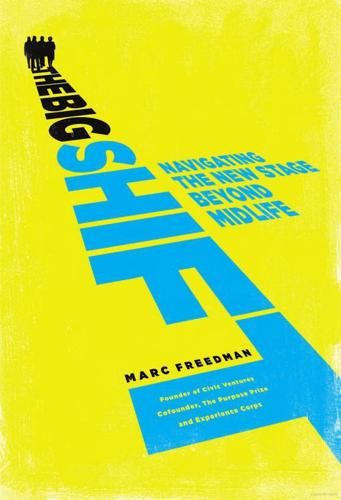
The Big Shift: Navigating the New Stage Beyond Midlife
by
Marc Freedman
Published 15 Dec 2011
I can’t believe there’s a school that would foster that kind of relationship building. I joke about it—it’s like Hogwarts! We go out for a weekend once a month, and we’re in this magical place, Island Wood, and sometimes we spontaneously sing at dinner. There’s a lot of intentional community at work, and from my own experience in business, that intentional community is going to accelerate innovation and creativity and bring confidence to people. When people break out of the constructs of the bottom line and profit, the real growth comes from being expansive in your vision. I feel immensely grateful that I went from being cynical and pretty beaten up in my life in business to this, to going to this place of power.
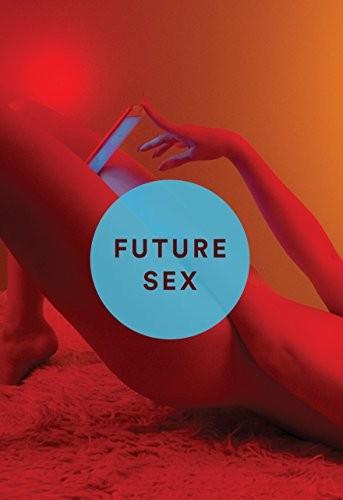
Future Sex
by
Emily Witt
Published 10 Oct 2016
I wanted to picture a different future, one aligned with the freedom of my present, and in those years, San Francisco was where the future was going to be figured out, or at least it was the city America had designated for people who still believed in free love. They sought to unlink the family from a sexual foundation of two people. They believed in intentional communities that could successfully disrupt the monogamous heterosexual tradition. They gave their choices names and they conceived of their actions as social movements. They saw in new technology an opportunity to refashion society, including ideas about sexuality. I understood that the San Franciscans’ focus on intention marked the difference between my pessimism and their optimism.
…
She did not realize all of this right away, but only after years of research. In 2000, by then in her thirties, she met Rob Kandell, who later became chief operating officer of OneTaste. Kandell had undertaken a similar navigation through California self-help, doing Landmark Forum workshops and studying the literature published by More University, an intentional community started in 1968 that produced reports on its “lifestyle experiments.” He told me, vaguely, that he met Daedone at “a social mixer with people engaged in sexuality.” Kandell was married at the time, but he, his wife, and Daedone started going to sexuality workshops together. Soon they started discussing a curriculum for their own workshops.
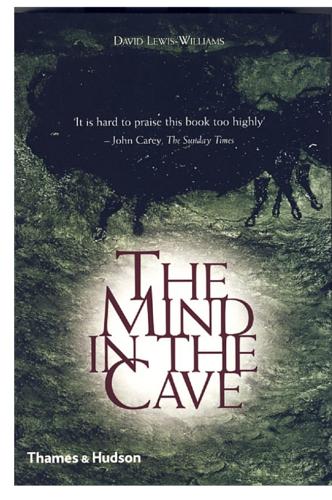
The Mind in the Cave: Consciousness and the Origins of Art
by
David Lewis-Williams
Published 16 Apr 2004
He begins by proposing four cognitive and physical processes (not to be confused with the four intelligence modules): – making visual images, – classification of images into classes, – intentional communication, and – attribution of meaning to images.9 He then points out that the first three abilities are found in non-human primates. The fourth is the key ability, and it, Mithen argues, is found only in hominids. Yet, even though hominids such as the Neanderthals had it, visual symbolism arose, or at any rate flowered, only at the Transition (some researchers argue for an earlier date for the first signs of symbolic behaviour). So, what happened? Prior to the Transition, intentional communication and classification were probably sealed in the social intelligence chapel, while mark-making and the attribution of meaning, which both implicate material objects, were probably ensconced in chapels of non-social intelligence.
…
Prior to the Transition, intentional communication and classification were probably sealed in the social intelligence chapel, while mark-making and the attribution of meaning, which both implicate material objects, were probably ensconced in chapels of non-social intelligence. At the Transition, accessibility between chapels made art possible by allowing intentional communication to escape into the domain of mark-making. Some reservations Evolutionary psychology as a sub-discipline has its critics.10 Unfortunately, there is a muddying of the waters with political correctness. Some critics find that the tenets of evolutionary psychology are uncomfortably close to freemarket economics, which they abhor.

Giving the Devil His Due: Reflections of a Scientific Humanist
by
Michael Shermer
Published 8 Apr 2020
On Mars, everyone will be critical to everyone else’s survival, so “extraterrestrial tyranny is impossible.” * * * There are, as well, a variety of social experiments in setting up new societies here on Earth that differ from nations and states, and these come in the form of unintentional communities, such as shipwrecked sailors stranded on an island, intentional communities, such as the communes established in America in the nineteenth century and the Kibbutzim founded in Israel in the twentieth century, and artificial communities, such as online gaming communities developed in the twenty-first century. These natural experiments in living that differ from those I’ve been discussing are deeply explored by the evolutionary sociologist Nicholas Christakis in his 2019 book Blueprint: The Evolutionary Origins of a Good Society.
…
They shared food equitably, worked together toward common goals (like repairing the dinghy), voted democratically for a leader who could be replaced by a new vote, dedicated themselves to their mutual survival, and treated one another as equals.” Take note, future Martians. * * * In between unintentional and intentional communities is arguably the most famous of these forbidden experiments, which began in the early morning hours of April 28, 1789, when Fletcher Christian, the Master’s Mate of the HMS Bounty – a modest-size merchant ship crewed by forty-five men and loaded with over a thousand pots of breadfruit trees bound for the Caribbean islands where they would be delivered as cheap slave fodder for the British colony there – seized control of the ship from Captain William Bligh, released the captors into a 23-foot launch, and sailed the Bounty into the mists of history where they were not found until 1808, when only one member of the original crew, John Adams, survived to tell the tale of what happened.
…
Arkansas, 52 Erasmus, 225 eSkeptic, 81 Espionage Act (1917), 2 European Union founding of, 249–250 evil myth of pure evil, 28–37 nature of, 28–37 evolution argument for decentralising authority, 215–217 case for bottom-up self-organization, 215–217 development of Darwin’s theory, 44–46 impact of the Darwinian revolution, 44–47 religious-based skepticism, 47–50 support for creationism in America, 46 why people do not support it, 47–50 evolution–creationism controversy, 44–54 Evolutionary Creationists, 51 evolutionary economics collective action problem, 198–201 Darwin economy, 199–201 hidden costs of market failures and moral hazards, 201–202 importance of positional rank, 200–201 role of ostentatious display, 200–201 “sin taxes”, 201–202 taxation, 203 top-down government, 199–201 transaction costs of keeping up with the Joneses, 201–202 See also evonomics evonomics advantages gained from ostentatious display, 207–210 argument for wealth redistribution, 210–213 bottom-up self-organization, 203–205 connection between Adam Smith and Charles Darwin, 203–205 corporations as species, 205–207 creative destruction concept, 206 fatal conceit of top-down government, 215–217 positional ranking, 210–213 relative happiness, 210–213 what is seen and not seen in government actions, 213–215 Expanding Circle theory, 240 expanding sphere of knowledge metaphor, 125 externalities, 199 extraterrestrial intelligence, 221 Fawcett, Henry, 45–46 Feder, Ken, 324–325 feminism victimhood culture, 73 Ferris, Timothy, 228 Festinger, Leon, 95 Feynman, Richard, 123, 316 First World War, 1, 16 Fisher, Helen, 158 flat-Earthers, 51 Flynn, James, 19, 23, 24–25 Flynn Effect, 25 Forbes, Bertie, 206 Ford, Henry, 31 Foundation for Individual Rights in Education (FIRE), 25, 70 Foundation for the Future, 289 14/88 code, 30–31 Fox, James Alan, 169, 175 Fox News, 181 fragile children, 74 Frank, Robert H., 198, 199–202, 203, 204, 208–213, 215–217 Franklin, Benjamin, 84, 226 Frankowski, Nathan, 55 Freakonomics theory, 174 free trade institutions, 249–251 free will–determinism debate, 264–265 freedom of inquiry, 8, 19–27search for truth in science, 26–27 freedom of speech, 19–27campus unrest over controversial speakers, 64–78 college speaker disinvitations, 70–71 democracy and, 26 evolution–creationism controversy, 44–54 Free Speech Movement of the late 1960s, 64–65 giving the devil his due, 1–9 hate speech, 13–16, 28–37 Holocaust denial, 38–43 increasing viewpoint diversity in colleges, 76–78 Intelligent Design conspiracy theory, 55–63 Jordan Peterson on gender pronouns and Bill C-16, 300–303 microaggressions, 68–70 Ten Commandments of free speech and thought, 7–8 trigger warnings, 66–67 French Revolution, 72 Fuji film, 206 Gacy, John Wayne, 35 Gap Creationists, 51 Gardner, Martin, 270, 271, 319 Geivett, Douglas, 104 Geller, Uri, 271, 272 gender differences research on, 22–23 gender pronouns Jordan Peterson on, 300–303 General Electric (GE), 206 General Motors (GM), 206 Generation X, 65 Generation Z how they handle challenges, 64–65 Geocentrists, 51 Geoffroy, Gregory, 60 George, Robby, 83 Ghawi, Jessica, 176 Gibbon, Edward, 204 Giffords, Gabrielle, 175 Gingrich, Newt, 82, 83 Gish, Duane, 280 Göbekli Tepe stone structures, 324–326 God and the purpose of the universe, 103–108 creation of the universe ex nihilo (out of nothing), 115–117 ontological argument for the existence of, 114 Goldberg, Jeffrey, 279–280 Goldberg, Jonah, 131 Goldhagen, Daniel, 61 Goldman, Emma, 2 Goldwater, Barry, 77 Gonzales, Guillermo, 59–60 Google, 206, 260 Gore, Al, 137 Gould, John, 44 Gould, Stephen Jay, 292, 294 governance experiments artificial communities, 154 HMS Bounty mutineers on Pitcairn Island, 156–159 intentional communities, 154 shipwrecked groups, 155–156 social experiments, 154–156 unintentional communities, 154–156 governance systems avoiding weak government, 153–154 challenges for, 147–148 delegative democracy, 149 designing extraterrestrial systems, 150–152 direct democracy, 149–150 features of good societies, 154–155 impact of cyber-technology, 153 in science fiction, 152–153 representational democracy, 149 types of, 149–150 government top-down government, 199–201 Grafen, Alan, 287 grand unified theory, 121 gravitational waves, 122 Gray, Asa, 287 Grayling, A.

What's Mine Is Yours: How Collaborative Consumption Is Changing the Way We Live
by
Rachel Botsman
and
Roo Rogers
Published 2 Jan 2010
These hip black-and-white tops with big bold type that were in fact advertisements for Stephanie Smith’s venture sold out within a week all over the country. These days, everyone from teachers to truck drivers, from busy professionals to stay-at-home moms, from designers to doctors, is starting to explore different forms of communal living. Ecovillages, cohousing, cooperatives, and other forms of intentional communities (the label now favored over communes) are sprouting up all around the world. Smith wants to play a big part in this resurgence. To start her project, Smith decided that she needed to pick a relatively small and contained community where she had a good relationship with someone who could help her get the project off the ground.
…
Buckminster Fuller,” GOOD (August 14, 2007), www.good.is/post/good-guide-r-buckminster-fuller/. 21. Jennifer Sharpe, “A Social Experiment: Communes in Cul-De-Sacs,” NPR radio interview (April 2, 2009), www.npr.org/templates/story/story.php?storyId=102651496. 22. Wikipedia definition of a Commune posted at http://en.wikipedia.org/wiki/Commune_(intentional_community). 23. Ariel Schwartz, “WeCommune: Social Networking Communes,” Fast Company (June 2009), http://origin-www.fastcompany.com/blog/ariel-schwartz/sustainability/wecommune-social-networking-communes? 24. James Surowiecki, The Wisdom of Crowds (Anchor Books, 2005), 86. 25. Allison Arieff, “Q&A: Sharing the Plenty in the Third Economy,” GOOD (March 24, 2010), http://www.refresheverything.com/blog/2010/03/24/qa-sharing-the-plenty-in-the-third-economy/ 26.

From Counterculture to Cyberculture: Stewart Brand, the Whole Earth Network, and the Rise of Digital Utopianism
by
Fred Turner
Published 31 Aug 2006
And the land itself—imagined as fertile, open, welcoming—would become a new frontier on which the commune dwellers could explore the limits of their own minds, their own bodies, and their own collective possibilities. Yet even as they set out to escape mainstream technocratic society, founders of the intentional communities of the Southwest embraced the technophilic, consciousness-oriented value systems that Brand had encountered earlier in USCO and among the Merry Pranksters and, beyond them, though less explicitly, the collaborative research culture of cold war America. In the late 1960s and early 1970s, intentional communities tended to be organized along one of two lines: either free-flowing anarchy or rigid, usually religious, social order.9 Both types of communities, however, embraced the notion that small-scale technologies could transform the individual consciousness and, with it, the nature of community.
…
In 1972 two New Mexico communes with strong links to San Francisco, Morning Star East and the Reality Construction Company, were thrown off their borrowed land; in 1973 Drop City was disbanded; the Lama Foundation continued, but by 1973 the Durkees and many of the original founders had left. Most communes collapsed for lack of sufficient political organization. The libertarian tribalism of Drop City was fun for a while, but the New Communalist emphasis on consciousness transformation rendered intentional communities vulnerable to charismatic leaders and, in their absence, anarchy. Moreover, few communes succeeded in generating sufficient income to keep going after gifts from family members and friends ran out. To survive, communities needed structures of governance and structured ways of making a living—the very institutional elements of social life that many New Communalists had hoped to avoid.32 In the coming years, many former New Communalists would turn toward the emerging New Age movement and toward a minor religious revival in the mid-1970s.33 In the early part of the decade, though, many of those who had sought to live outside mainstream American culture found themselves forced to return to it and to confront its many failings head-on.
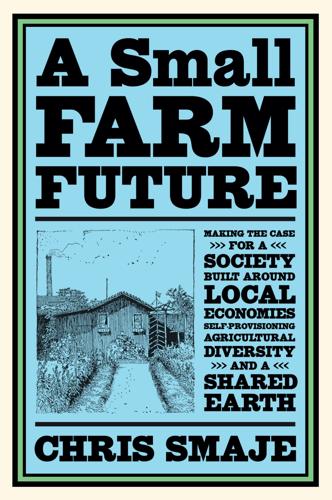
A Small Farm Future: Making the Case for a Society Built Around Local Economies, Self-Provisioning, Agricultural Diversity and a Shared Earth
by
Chris Smaje
Published 14 Aug 2020
For these reasons, agrarian societies have found that kin usually make the best farmworkers, because they have skills and temperament born of intimate residence, and have a shared long-term stake in the well-being of the farm that requires no day-to-day supervisory reinforcement. In Robert Netting’s pithy summation: ‘The household as a small, enduring, self-reproducing kinship unit can mobilize disciplined and responsible labor for intensive agriculture in a way the wage-labor farm cannot match.’4 We could also reasonably say that intentional communities of non-kin-based farm households probably cannot match it either. I don’t want to suggest there’s no role for non-kin household farming in the future. There are plenty of enduring examples of it historically, among which religious communities loom large. Non-kin household farming seems to work best when members are brought together by a wider common purpose of the kind supplied by religious commitment, together with a vocation for farming, rather than when they resort to it by default as a way of escaping the rat race.
…
Even pro-urban analysts who’ve looked carefully at the evidence concede the depth and intractability of issues like urban poverty, underscoring the point that the violence, squalor, social breakdown and political inertia is hardly an attractive path towards human ‘development’.42 It seems even less likely to be so in the future. An alternative strand of rural utopianism proceeds from the view that a specifically modern rural life could in theory be optimal, without taking a position on the lot of traditional rural dwellers. There’ve been any number of back-to-the-land experimenters and rural intentional communities that have put this idea to the test in modern times – sometimes quite successfully, sometimes not. Often, they’ve been middle-class movements in which people have used accumulated fiscal and social capital to swim individually against the current of the mainstream economy. The question is whether such experiments will remain a fringe activity or presage a wider turn towards rural sustainability in a post-capitalist future.
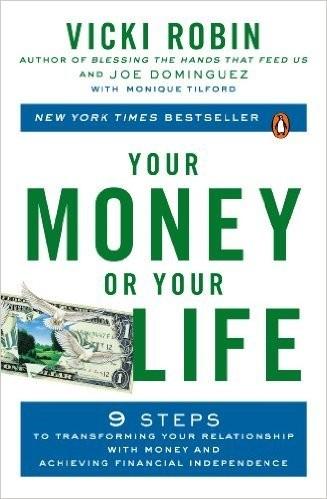
Your Money or Your Life: 9 Steps to Transforming Your Relationship With Money and Achieving Financial Independence: Revised and Updated for the 21st Century
by
Vicki Robin
,
Joe Dominguez
and
Monique Tilford
Published 31 Aug 1992
They loved their lives but looked forward to an “empty nest” so that they too could fly the coop. The financial program gave them a way to retire from their paid employment at the same time they retired from being full-time parents. They moved to a small town and bought land that became the heart of an “eco-village”—an intentional community committed to sustainability on every level possible. Helen is now a force of nature in this new community and also has time for her painting. Step 4 of this financial program allows you to evaluate your priorities and rebalance your accounts. It allows you to take your dreams out of hock and reincorporate them into your everyday, making-a-dying life.
…
You may well be able to keep your current job and work remotely, thanks to the Internet. If you’re in the market for a new home, think about buying a duplex. Living on one side and renting out the other will allow you to lower your monthly mortgage payment dramatically. Explore living in an intentional community (type “co-housing” into your Web browser if you want to learn more) where you’ll be able to share your life with people who share your values while usually also lowering your expenses. If you’ve identified a neighborhood you like, consider finding a house to rent that isn’t yet on the market.

The Optimist: Sam Altman, OpenAI, and the Race to Invent the Future
by
Keach Hagey
Published 19 May 2025
She was working at a boutique investment bank, waiting to hear back on a marketing job in venture capital, and writing a book about her obsession: startup founders like Graham.12,13 The daughter of New England bluebloods, Livingston was raised by her father and grandmother after her mother “left home,” as Livingston put it, when she was still a baby.14 Her mother, Lucinda Pauley, had been a debutante who became engaged while studying English at Wellesley.15 Months after the birth of her first child in 1971, she left her family and went on to spend decades living in intentional communities and writing about “planetary healing,” changing her name to Shen.16 David Livingston, an MBA who spent his career working at the Gillette Company, brought his baby daughter back from Minneapolis, where they were living at the time of the split, to his native Boston area, where his family roots stretched back to his great-great-grandfather, H.
…
Says It Expects a Loss Due to Second-Quarter Charge,” The Wall Street Journal, June 19, 1998. 6.Paul Graham, “Hackers and Painters,” PaulGraham.com, May 2003. 7.Lagorio-Chafkin, Nerds, 4. 8.Paul Graham, “How to Start a Startup,” PaulGraham.com, March 2005. 9.Garry Tan, “Meet the YC Winter 2024 Batch,” Y Combinator, April 3, 2024. 10.Paul Graham, “Female Founders,” PaulGraham.com, January 2014. 11.Lagorio-Chafkin, Nerds, 24. 12.Livingston, Founders, 447. 13.Paul Graham, “How Y Combinator Started,” PaulGraham.com, March 2012. 14.Jessica Livingston, “Think Different. Think Users,” Posthaven, accessed June 24, 2024. 15.“David Livingston Will Marry Lucinda Pauley, ’65 Debutante,” The New York Times, April 14, 1968. 16.Shen Pauley, author page, Foundation for Intentional Community, accessed June 15, 2024. 17.“Honorees of the 2014 Veterans Parade: David Livingston,” Wicked Local, May 18, 2014. 18.Paul Graham, “A Unified Theory of VC Suckage,” PaulGraham.com, March 2005. 19.Tom Nicholas, VC: An American History (Cambridge, MA: Harvard University Press, 2019), 1–2. 20.Jessica Livingston, “Grow the Puzzle Around You,” Posthaven, June 30, 2018. 21.Livingston, Founders, 447. 22.Graham, “How to Start a Startup.” 23.Livingston, “Grow the Puzzle,” Posthaven. 24.Randal Stross, The Launch Pad: Inside Y Combinator (New York: Portfolio/Penguin, 2012), 3. 25.Justin Kan, “My Y Combinator Interview,” A Really Bad Idea Blog, November 24, 2010. 26.Aaron Swartz, “SFP: Come See Us,” Aaron Swartz’s blog. 27.Lagorio-Chafkin, Nerds, 37–38. 28.Matthew Lynley, “How a Site That Streams People Playing Video Games Became a Billion Dollar Business,” BuzzFeed, August 7, 2014. 29.Kan, “My Y Combinator Interview.” 30.Swartz, “SFP: Come See us.” 31.Ryan Singel, “Stars Rise at Startup Summer Camp,” Wired, September 13, 2005. 32.Melissa Block, “Sprint Born from Railroad, Telephone Businesses,” NPR, October 15, 2012. 33.Livingston, Founders, 450. 34.
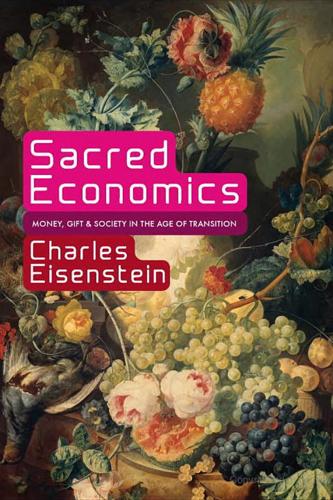
Sacred Economics: Money, Gift, and Society in the Age of Transition
by
Charles Eisenstein
Published 11 Jul 2011
Money is therefore not only a universal aim; it is a universal means as well, and indeed it is largely because it is a universal means that it is also a universal end, of which one can never have too much. Or at least, that is how we perceive it. Many times I’ve been witness to discussions about creating an intentional community or launching some other project, only for it to end with a disheartening admission that it will never happen because, “Where are we going to get the money?” Money is quite understandably seen as the crucial factor in determining what we can create: after all, it can buy virtually any good, can induce people to perform virtually any service.
…
What of the gas that gets me places and gets deliveries to me if I go “off-grid”? I can minimize my participation in the world-devouring machine, but I cannot avoid it entirely. As people become aware that merely living in society means contributing to the evils of the world, they often go through a phase of desiring to find a completely isolated and self-sufficient intentional community—but what good does that do, while Rome burns? So what, if you are not contributing your little part to the pollution that is overwhelming the earth? It proceeds apace whether you live in the forest and eat roots and berries or in a suburb and eat food trucked in from California.9 The desire for personal exculpation from the sins of society is a kind of fetish, akin to solar panels on a 4,000-square-foot house.
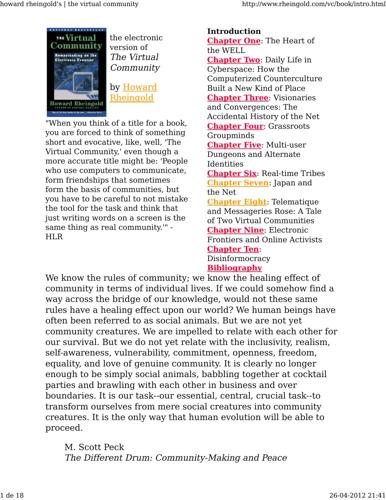
Howard Rheingold
by
The Virtual Community Homesteading on the Electronic Frontier-Perseus Books (1993)
Published 26 Apr 2012
When Tex left the WELL in 1992 to take a position in another online service, the WELL community threw a combination testimonial, bon voyage party, and roast. One by one, people came up to the podium, grabbed Tex, and talked to him from about three inches away. His "in your face" style and his anecdotes from twelve years of trying to make a real-life intentional community work represented a core value of the WELL that has survived beyond the years of Farm-vet management: a commitment to using the medium to make real human connections, and more--to try to find better and better ways to live with each other in cyberspace. From the beginning, the exchange of information and the sharing of emotional sympathy exemplified by the Experts on the WELL topic and the Parenting conference were accompanied by some of the less attractive attributes of human groups.
…
"I knew that if we could create a suitable play space," Kort told me during one of our world-building sessions, "children would learn at remarkable rates, and they would learn a wide range of skills and subject matter." Kort was also interested in communitybuilding. Education could also be the focus of an online intentional community. Kort and Lim modeled the organizational charter of MicroMUSE, the simulation environment in which Cyberion City exists, on Children's Television Workshop --as a nonprofit, noncommercial enterprise dedicated to harnessing the inherent educational power of networks. The charter--required reading for prospective citizens--sets forth a democratic but definite standard of behavior, and the personal commitment the MicroMUSE architects brought into the venture set the tone for the new kind of MUD.

Whole Earth: The Many Lives of Stewart Brand
by
John Markoff
Published 22 Mar 2022
The Catalog itself was first announced to the world in May 1968 in a Portola Institute marketing brochure, offering $8 annual subscriptions covering two issues and two supplements, and setting the single-issue price at $5. “The function of this program is improving access to tools for self-dependent self-education, individual or cooperative,” the brief announcement read, adding that as a preliminary to the Catalog, the Truck Store would travel to intentional communities, experimental schools, and design departments during the summer to do market research. In preparing for his new project, Brand went back to the roots of his senior year magazine-writing class at Stanford. His first stop was to visit Bill Lane, the publisher of Sunset magazine. He remembered a basic lesson from his class: that it would take a minimum of $1 million to launch a national magazine.
…
He remained close to the Engelbart team and a close friend of Dave Evans’s in particular. At the end of May the two men teamed up at a weekend workshop at Esalen on the use of tools. The idea was to investigate “some of the new modes of tool use—from the satisfying do-it-yourself labor of intentional communities to the intense experience of living and working on-line with a powerful computer facility.” The connection between Brand’s access-to-tools orientation and Engelbart’s intelligence augmentation ideas with computers was immediate; personal computers were on the horizon, simply awaiting the invention of the microprocessor in 1971, making computing affordable to hobbyists.
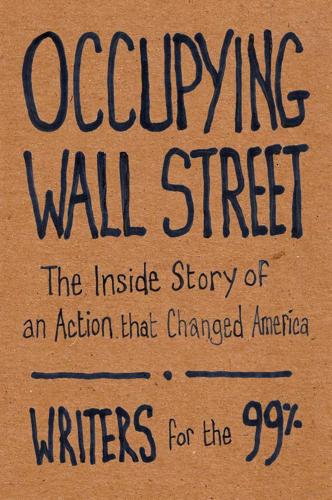
Occupying Wall Street: The Inside Story of an Action That Changed America
by
Writers For The 99%
Published 17 Dec 2011
“My experience in Spain was incredibly important in influencing my participation in Bloombergville, the NYCGA, and ultimately OWS.” His interactions with the Indignados also show how organizers on different continents communicated and synced with each other, sharing ideas and tactics. Among other commonalities, protesters across the world occupied spaces of symbolic importance and built an intentional community–attempting to create, in miniature, the kind of society that they wanted to live in–a society that took care of all its members’ needs for food, clothing, shelter. The encampments gave them a sense of community and family, as well as a set location to talk to one anther and to the press. And while Facebook and Twitter were unevenly censored in some of these countries, many of the protesters carried smartphones–allowing highly organized movements to quickly mobilize massive numbers of people.
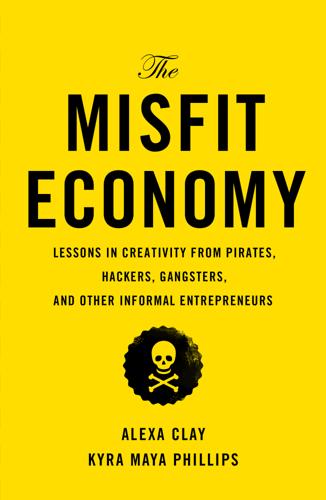
The Misfit Economy: Lessons in Creativity From Pirates, Hackers, Gangsters and Other Informal Entrepreneurs
by
Alexa Clay
and
Kyra Maya Phillips
Published 23 Jun 2015
The aim is to build an informal collective, much like the structure of Anonymous or a loose guild or entourage, to enable individuals to carve out space to wrestle with big questions. Wisdom Hackers occurs outside of traditional educational environments and provides tools for any community to “download” and initiate an inquiry into life’s “burning questions.” Misfit ideas are also beginning to mainstream in housing. Hippie notions of cooperatives and “intentional community” are being refreshed for modern lifestyles. In San Francisco, the Embassy Network is a network of shared living spaces that busy creative professionals or travelers can plug into. Berlin cooperative housing units such as Lighthouse and Hain 24 allow autonomy through private apartments but have common areas and resources for a diverse group of residents, including singles, families, and retirees.

Interactive Data Visualization for the Web
by
Scott Murray
Published 15 Mar 2013
Data visualization is an interdisciplinary field, which is just one reason it’s impossible to document the breadth of skills needed in a single book. Fortunately, because the field is exploding in popularity, there are many new titles to choose from, each of which complements this one. On design process: Designing Data Visualizations: Intentional Communication from Data to Display by Noah Iliinsky and Julie Steele. O’Reilly Media, 2011. Data Visualization: A Successful Design Process by Andy Kirk. Packt Publishing, 2012. On visual design principles and techniques: The Functional Art: An Introduction to Information Graphics and Visualization by Alberto Cairo.
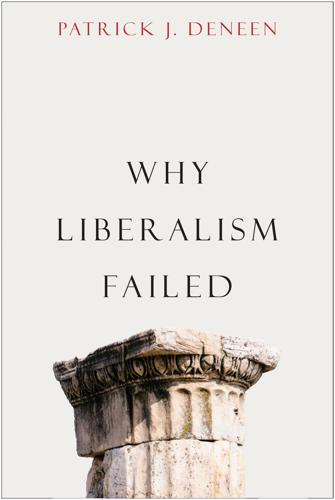
Why Liberalism Failed
by
Patrick J. Deneen
Published 9 Jan 2018
The greatest benefit of civic participation, he argued, was not its effects in the world, but those on the relations among people engaged in civic life: “Citizens who are bound to take part in public affairs must turn from the private interests and occasionally take a look at something other than themselves. As soon as common affairs are treated in common, each man notices that he is not as independent of his fellows as he used to suppose and that to get their help he must often offer his aid to them.”7 For a time, such practices will be developed within intentional communities that will benefit from the openness of liberal society. They will be regarded as “options” within the liberal frame, and while suspect in the broader culture, largely permitted to exist so long as they are nonthreatening to the liberal order’s main business. Yet it is likely from the lessons learned within these communities that a viable postliberal political theory will arise, one that begins with fundamentally different anthropological assumptions not arising from a supposed state of nature or concluding with a world-straddling state and market, but instead building on the fact of human relationality, sociability, and the learned ability to sacrifice one’s narrow personal interest not to abstract humanity, but for the sake of other humans.
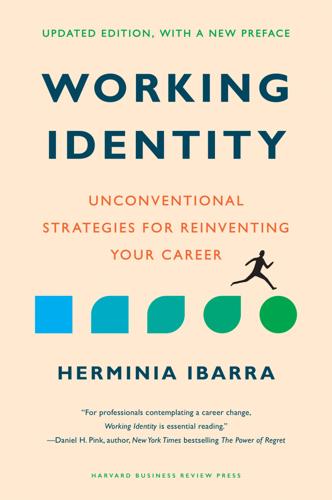
Working Identity, Updated Edition, With a New Preface: Unconventional Strategies for Reinventing Your Career
by
Herminia Ibarra
Published 17 Oct 2023
It was very exciting,” he stated. “There were six families in which one or the other partner was in the training program. We were meeting together after these training sessions; we really liked each other. And we talked about living closer together and so on and the upshot of it was that we decided to form an ‘intentional community.’ ” Communities of practice like the one Bridges joined abound. Many have the implicit or explicit purpose of helping new members make the transition to their world, especially when it comes to independent work, where there is no employer on the other side to onboard you. For example, internationally acclaimed coach and author Marshall Goldsmith established 100 Coaches, a community of coaching and leadership experts dedicated to helping people and organizations be more effective.
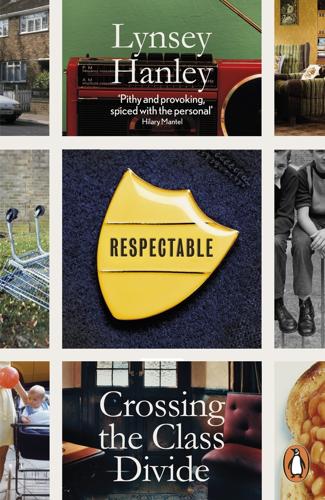
Respectable: The Experience of Class
by
Lynsey Hanley
Published 20 Apr 2016
Surely, to think of people walking around a barren precinct their whole lives, waiting in the bitter cold with Farmfoods bags for buses that never come, suggests something depressive in you, rather than in the scene itself. Now live in it. Places such as Chelmsley Wood, and the lives lived in them, don’t enter the wider consciousness except through portmanteau terms such as council estate and deprivation, or, to the well intentioned, community and regeneration. These days I live in a nice suburb, which never gets described by other people as a ‘community’: it is a distinctive neighbourhood, with specific characteristics and residents who are assumed to have autonomous lives. I have a map in my mind of where I grew up, on this largest of estates.
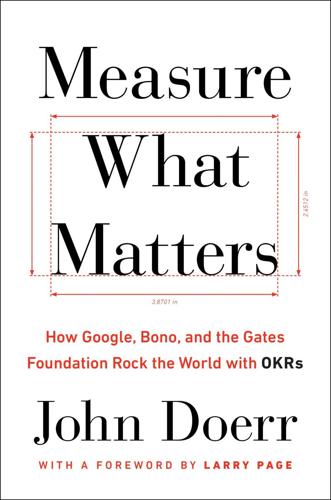
Measure What Matters: How Google, Bono, and the Gates Foundation Rock the World With OKRs
by
John Doerr
Published 23 Apr 2018
Sylvia Mathews Burwell, a Gates alumna, ported the process to the federal Office of Management and Budget and later to the Department of Health and Human Services, where it helped the U.S. government fight Ebola. But perhaps no organization, not even Intel, has scaled OKRs more effectively than Google. While conceptually simple, Andy Grove’s regimen demands rigor, commitment, clear thinking, and intentional communication. We’re not just making some list and checking it twice. We’re building our capacity, our goal muscle, and there is always some pain for meaningful gain. Yet Google’s leaders have never faltered. Their hunger for learning and improving remains insatiable. As Eric Schmidt and Jonathan Rosenberg observed in their book How Google Works , OKRs became the “simple tool that institutionalized the founders’ ‘think big’ ethos.”
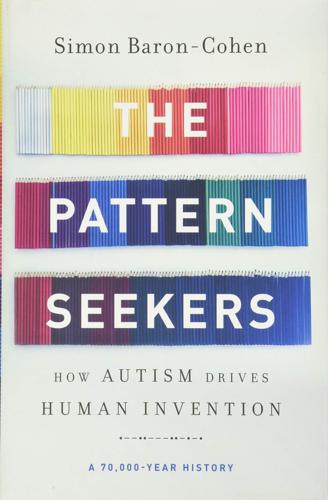
The Pattern Seekers: How Autism Drives Human Invention
by
Simon Baron-Cohen
Published 14 Aug 2020
In contrast, when a vervet makes a different alarm call in the presence of a tiger, this serves as a useful early-warning system letting other monkeys who hear the alarm know what to do, but this is no evidence that the “speaker” is referring to anything. Pika and Mitani (2006) suggest that chimps can point to the part of their body they want another chimp to scratch during grooming, as if to say “Scratch here,” and that this is understood as intentional communication and reference by the receiver. A more parsimonious explanation is that chimps learn that if they point to where they want to be scratched, they get scratched there, so reward learning can explain this without assuming they have a capacity for reference. If they could refer, we would see them referring widely, not just to where they want to be scratched.
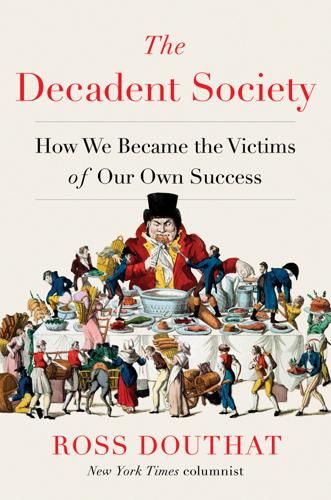
The Decadent Society: How We Became the Victims of Our Own Success
by
Ross Douthat
Published 25 Feb 2020
They might encompass everything from new versions of the utopian communes of the 1960s and the nineteenth century, to libertarian experiments such as charter cities, to attempts to re-create the monastic communities that arose under Rome’s imperial decay, to simple revivals of town-meeting democracy and other vanishing Tocquevillian forms. Describing the trajectory of these “intentional communities,” Deneen suggests that at first they could coexist with the broader liberal order and benefit from its sustainably decadent protection. But over the long run, they might supply a full alternative to our own era’s sense of lost possibility: [Initially,] they will be regarded as options within the liberal frame, and while suspect in the broader culture, largely permitted to exist so long as they are nonthreatening to the liberal order’s main business.
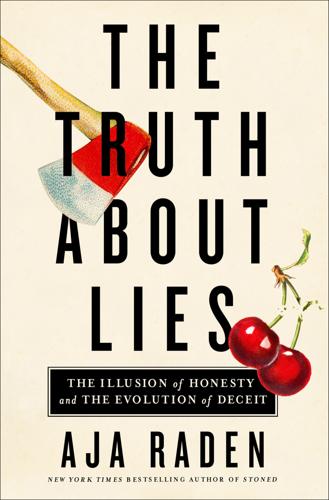
The Truth About Lies: The Illusion of Honesty and the Evolution of Deceit
by
Aja Raden
Published 10 May 2021
But in addition to that honesty bias, infants and toddlers also have a fully functioning theory of mind, ready to deceive people. How do we know that—apart from the fact that they’re manipulative little suckers? Actually, that is how we know. There’s a whole host of important social cognitive skills, including establishing joint attention, intentional communication of any kind, and the ability to imitate specific movements and gestures (like patty-cake or waving back at someone) and facial expressions—all of which belie a functioning theory of mind. And the vast majority of infants have mastered these, at least, by nine months. By eighteen months, most toddlers begin to engage in not just manipulative but deliberately subversive or deceptive behavior: creating distractions, hiding food they don’t want to eat, and even imitating their own emotions to elicit a desired, previously observed response (also known as fake crying).
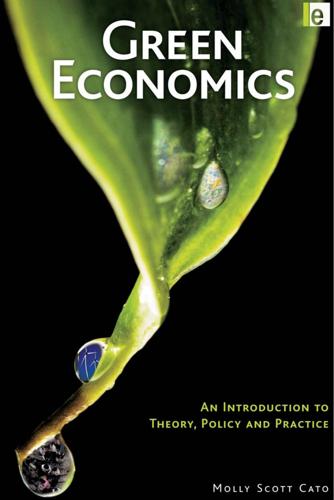
Green Economics: An Introduction to Theory, Policy and Practice
by
Molly Scott Cato
Published 16 Dec 2008
The first step in addressing this is for government at national and local level to recognize the value of ecovillages as social and technological pioneers and as catalysts for regeneration.20 LAND AND THE BUILT ENVIRONMENT 195 Dawson emphasizes the regeneration potential of this form of community development; this is particularly important since many of those who live in ecovillages exist within an alternative cultural paradigm.21 In terms of individual dwellings, the broadly defined ‘green movement’ has made considerable contributions to social and technical innovation. In the UK, sustainable construction has largely taken place outside the construction industry, based on the work of committed self-builders working with organizations such as the Centre for Alternative Technology, itself an intentional community based in Machynlleth, Mid Wales. There is evidence of market failure in this sector, with demand outstripping supply and consumers being better informed and more sympathetic to sustainable building than construction ‘experts’. The research makes clear that the initiators of low-energy housing development in the UK have been registered social landlords, self-builders and local authorities, with the private sector accounting for only 6 per cent of such developments.22 The explanation is that the strong values and uniting ideology of the green movement have provided support for sustainable construction developments.

Live Work Work Work Die: A Journey Into the Savage Heart of Silicon Valley
by
Corey Pein
Published 23 Apr 2018
While Thiel was preparing his escape routes, his younger admirer Mike Anissimov was doing the same, albeit in his own low-rent way. Like Thiel, he didn’t intend to endure the unraveling of the present system while waiting around for the Singularity to bring salvation. In 2014, Anissimov let slip plans for an “intentional community”—don’t call it a neoreactionary cult!—in the Idaho wilderness. (Anissimov took down his website with a draft of the scheme from the internet after I asked him about it, but he later self-published a $5.99 “Idaho Project” e-book.) His half-baked proposal included an appeal for recruits and funds.
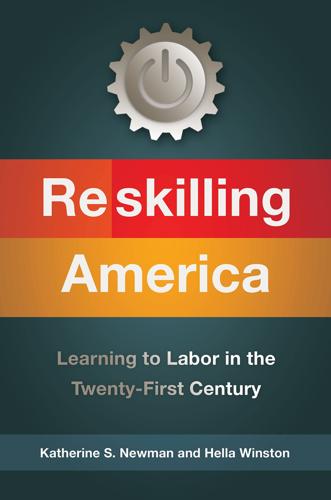
Reskilling America: Learning to Labor in the Twenty-First Century
by
Katherine S. Newman
and
Hella Winston
Published 18 Apr 2016
As late professor of education Burton Clark argued, students found themselves in remedial classes that led nowhere and, over time, lost much of their ambition for higher education. When asked to identify the reasons why they enrolled in a community college, over one-third of students reported that they had higher ambitions, especially moving to four-year colleges.8 Unfortunately, poverty, parenthood, and a host of other problems often intervene to thwart their intentions. Community colleges let student expectations decline slowly rather than confront them in a sharp shock as they emerge from poor high schools. He coined the phrase “cooling out” to describe this masking process.9 Of first-time college students who enrolled in a community college in the fall of 2008, 39.1 percent earned a credential from a two- or four-year institution within six years,10 16.2 percent of students who started at community colleges in 2008 completed a degree at a four-year institution within six years, and 60.4 percent of these bachelor’s degree earners (or 9.8 percent of the total cohort) did not obtain a two-year degree before transferring.11 These high noncompletion rates are worrisome because amassing a few credits does not pay off very much in the labor market.12 The multitude of forces responsible for these low completion rates—from the impact of poverty to the competition between school and family responsibilities to the confusing curricular organization of many community colleges—have been the subject of attention from major foundations, federal and state government, and the higher education systems themselves.
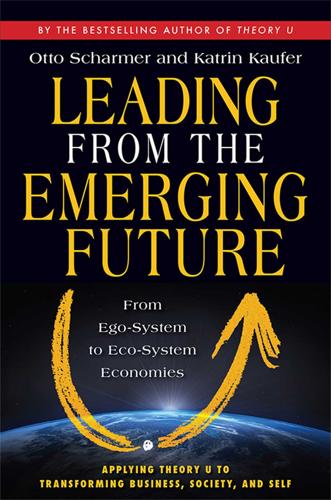
Leading From the Emerging Future: From Ego-System to Eco-System Economies
by
Otto Scharmer
and
Katrin Kaufer
Published 14 Apr 2013
Today we stand at the edge of the next jump in technological innovation, which may take us from system-centric technologies to human- or life-centric technologies that we can shape and give meaning to. If we succeed in making this leap, we will strengthen the use of creativity-enhancing technologies that facilitate co-sensing, co-creating, and co-using. What does it take? It takes the formation of some intentional communities of creation, like the one that Torvald started with a simple email. To create these communities more often, more intentionally, and also more inclusively, we need supportive holding spaces and people. These communities of creation, once formed, might have a huge impact on this century’s journey. 5.
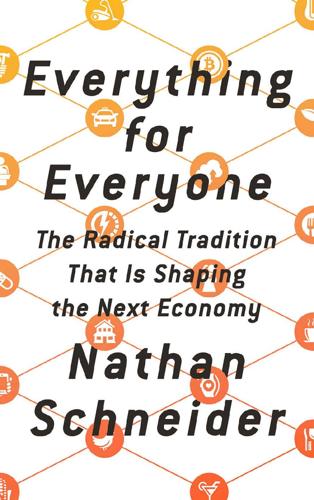
Everything for Everyone: The Radical Tradition That Is Shaping the Next Economy
by
Nathan Schneider
Published 10 Sep 2018
A family of two grandparents, two parents, and six grandkids could, by right of law, share a house that ten people unconnected by blood could not—even if they considered their housemates their family, even if their biological families had turned them out, as was the case for several speakers that night, generally on account of their gender identities. This was a claim to the right of intentional community, the right that so many monastics, artist colonies, friends, and co-workers have shared. Those words rebuked the regime of detached houses with yards and strip malls, which James Howard Kunstler has suggested make America less “worth defending.”17 This system of thought requires each person or couple to consistently earn the money sufficient for a house, a car or two, a lawn, however many batches of child care and higher education they dare to commit themselves to through procreation, and so on.

Pattern Recognition
by
William Gibson
Published 2 Jan 2003
Then she e-mails Parkaboy and tells him she'll be in Tokyo the day after tomorrow, and to start thinking about what she'll need to do to deal with Taki. She pauses, about to open the latest from her mother, and remembering that she still hasn't replied to the previous two. Her mother is cynthia@roseoftheworld,com, Rose of the World being an intentional community of sorts, back up in the red-dirt country of Maui. Cayce has never been there but Cynthia has sent pictures. A sprawling, oddly prosaic sixties rancher set back against a red hillside in long sparse grass, that red showing through like some kind of scalp disease. Up there they scrutinize miles of audiotape, some of it fresh from its factory wrap, unused, listening for voices of the dead: EVP freaks, of which Cayce's mother is one from way back.
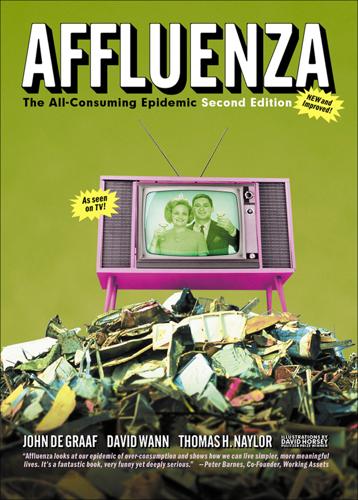
Affluenza: The All-Consuming Epidemic
by
John de Graaf
,
David Wann
,
Thomas H Naylor
and
David Horsey
Published 1 Jan 2001
“A nation is really rich if the working day is six hours rather than twelve,” Marx wrote, quoting approvingly the anonymous author of a British article written in 1821: “Wealth is liberty—liberty to seek recreation, liberty to enjoy life, liberty to improve the mind: it is disposable time and nothing more.”12 SIMPLY THOREAU Meanwhile, across the Atlantic, an American movement offered a similar critique of industrialization and the acquisitiveness it engendered. The transcendentalists, as they called themselves, idealized the simple life close to nature, and they started intentional communities (none destined to last very long) such as Brook Farm and Fruitlands, based on their principles. Better remembered, if similarly short-lived, was Henry David Thoreau’s 1845 sojourn to a one-room cabin he built on the shore of Walden Pond, near Boston. “Simplicity, simplicity, simplicity,” wrote Thoreau in Walden.
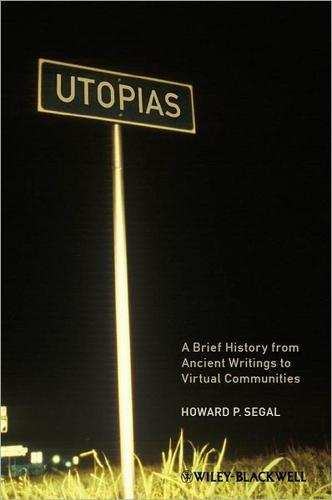
Utopias: A Brief History From Ancient Writings to Virtual Communities
by
Howard P. Segal
Published 20 May 2012
For more information on the journal see http://muse.jhu.edu/content/alerts/journals/utopian_studies. UtopianStudiesisapeer-reviewedpublicationoftheSocietyforUtopian Studies,publishingscholarlyarticlesonawiderangeofsubjectsrelatedto utopias, utopianism, utopian literature, utopian theory, and intentional communities. Contributing authors come from a diverse range of fields, including American studies, architecture, the arts, classics, cultural studies, economics, engineering, environmental studies, gender studies, history, languages and literatures, philosophy, political science, psychology, sociology, and urban planning.
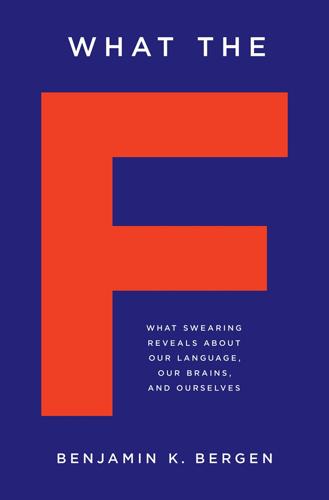
What the F: What Swearing Reveals About Our Language, Our Brains, and Ourselves
by
Benjamin K. Bergen
Published 12 Sep 2016
The visible body, deployed appropriately, can do a lot of communicative work—from requesting the time to conveying the size of a drink order. You see this most obviously when vocal-tract calisthenics are of no use, like when a person’s mouth is full or when he or she doesn’t speak the local vernacular. But physical gestures are also deployed as intentional communicative acts of their own. An A-OK gesture tells a pilot he’s cleared for takeoff. A Check-Please gesture summons an attentive waiter. And the Bird, well, you know what that does. Across a room, across the world, across the lifespan, people silently convey information using visible movements of their bodies.

The Undertow: Scenes From a Slow Civil War
by
Jeff Sharlet
Published 21 Mar 2023
He didn’t need to. The point of the gun was the promotion of peace. 7. Golden Tséstho’e (Cheyenne) and Núu-agha-tuvu-pu– (Ute) land In Golden, Colorado, where the mountains begin to ease into the plains, a friend took me to visit a garden shaped like a shield. It was at the heart of an intentional community—something like a commune with boundaries—presided over by a magnificent cottonwood tree. One entered the garden by crossing a little wooden span over a stream. Within, a gardener guided us from herb to herb, this one to make you sleepy, this one to make you alert. The gardener told us about a novel he had written.
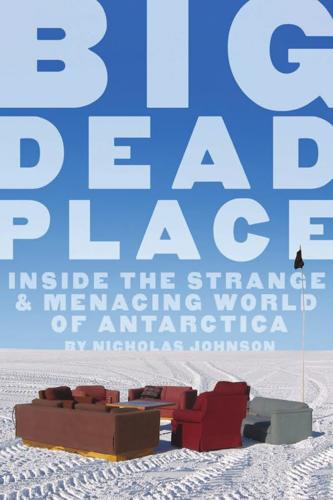
Big Dead Place: Inside the Strange and Menacing World of Antarctica
by
Nicholas Johnson
Published 31 May 2005
A yellow victim was immobile, but not in need of immediate medical attention. Red would probably die without immediate assistance, and black was either dead or about to be dead, and so passed over for care. Recent drills had added the intrigue of a criminal element. In one, a loader stolen by some ill-intentioned community member crashed into 155, cutting off heat and power to the Galley. In another, an illicit still exploded, killing its shameful owner and starting a fire in one of the dorms. On November 28, 1979, 237 passengers and 20 crew flew over Antarctica on commercial tourist Flight 901 from New Zealand.

The Human City: Urbanism for the Rest of Us
by
Joel Kotkin
Published 11 Apr 2016
But more provocatively, she asserts that they constitute an advantaged group in that they are more cyber-connected and “more likely to be linked to members of their social networks by bonds of affection.” Unlike families, whose members, after all, are often stuck with each other, singles enjoy “intentional communities” and are thus more likely “to think about human connectedness in a way that is far-reaching and less predictable.”88 These “singletons,” as one urban scholar notes, enjoy a “rich social life” that is “anchored by themselves” through friendship networks and social media. “Living alone,” he asserts, “might be what we need to reconnect.”89 Reliance on social media tends to emphasize further the primacy of post-familial relationships.
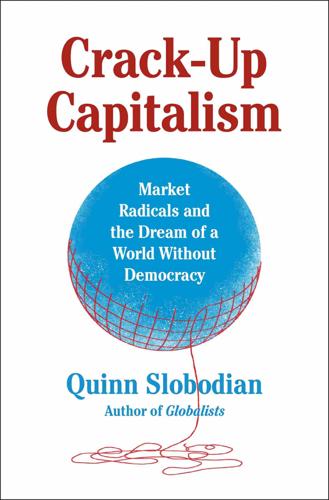
Crack-Up Capitalism: Market Radicals and the Dream of a World Without Democracy
by
Quinn Slobodian
Published 4 Apr 2023
Friedman and Friedman, Two Lucky People: Memoirs, 562; and “The Sea Ranch Restrictions: A Declaration of Restrictions, Covenants and Conditions,” May 10, 1965, https://www.tsra.org/wp-content/uploads/2019/11/Restrictions.pdf. 5. Lawrence Halprin and Bill Platt, “The Sea Ranch as an Intentional Community,” Ridge Review 3, no. 3 (Fall 1983), http://s3.amazonaws.com/arena-attachments/2149774/71f003a25682dd4abc2c7aa0b93720b6.pdf?1525789191. 6. Hadley Meares, “From Russia with Love: Fort Ross and Russia’s Failed Attempt to Conquer California,” KCET, August 2, 2017, https://www.kcet.org/shows/california-coastal-trail/from-russia-with-love-fort-ross-and-russias-failed-attempt-to-conquer-california. 7.

In Our Own Image: Savior or Destroyer? The History and Future of Artificial Intelligence
by
George Zarkadakis
Published 7 Mar 2016
As a result, the close-knit groups of early humans expanded rapidly to embrace their wider environment, for we now had the words with which to describe everything. The world of animals and of things became filled with the mind. Humans thus became the creators of a symbolic universe imbued with meaning. Art and the mind of objects All three cognitive processes critical to making art – the mental conception of an image, intentional communication and the attribution of meaning – were present in the early human mind. However, thanks to the rapid evolution of language between 60,000 and 40,000 years ago, they began to function together, thereby creating a new cognitive process we call visual symbolism, or simply art.23 Most prehistoric art is representational.

The Future Is Faster Than You Think: How Converging Technologies Are Transforming Business, Industries, and Our Lives
by
Peter H. Diamandis
and
Steven Kotler
Published 28 Jan 2020
Finally, since the time coins were conch shells, we trade it for the stuff we want. Thanks to converging exponentials, each of these areas is being reimagined, with bits and bytes replacing dollars and cents, and neither economics nor the way we live our lives will ever be the same. Good Money Gunnar Lovelace grew up poor. He was raised by a single mother in an intentional community in California, and never forgot his family’s struggle to meet basic needs, chief among them food and money. Lovelace went on to become a serial entrepreneur, and while his first three startups were in tech and fashion, he poured those profits into his fourth venture, Thrive Market, or his attempt to solve the struggle for food.
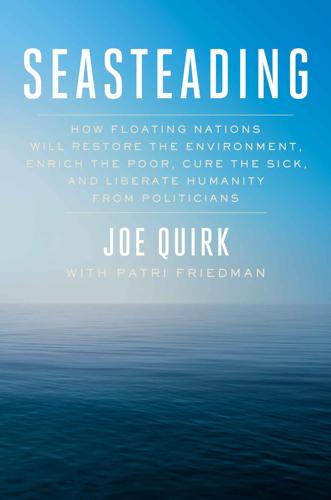
Seasteading: How Floating Nations Will Restore the Environment, Enrich the Poor, Cure the Sick, and Liberate Humanity From Politicians
by
Joe Quirk
and
Patri Friedman
Published 21 Mar 2017
Nobody will ever know until we try them out somewhere. Most likely they will serve as core ideas from which better ones will evolve—if only we can release these experiments in a fluid market where they will survive by consumer choice, not political force. It’s a nice theory, but will it work in practice? Patri, who had already founded two intentional communities, set out to test his idea the year after the Seasteading Institute was founded. Four years later, the principles of seasteading emerged in microcosm. Like a Fish to Water In the summer of 2009, the Seasteading Institute hosted the first annual floating festival of self-governance on the Sacramento Delta and called it Ephemerisle, which has since come to be known as “Burning Man on the water.”

American Foundations: An Investigative History
by
Mark Dowie
Published 3 Oct 2009
Almost every social theory and model has been, if not thoroughly tested, at least studied, debated, or attempted by a small group, workplace association, or community somewhere in the country. Over three centuries Americans have tried slavery, limited suffrage, universal suffrage, racial segregation, integration, producer cooperatives, consumer cooperatives, intentional communities, gated communities, suburbs, communes, closed shops, open shops, hierarchical workplaces, democratic management, and worker collectives. Also tested has been every imaginable way to educate, employ, punish, reward, heal, protect, and inspire the citizenry. America has tried harder than most civilizations-and suffered through some painful political movements, even a civil war-to maintain and defend "liberty and justice for all."
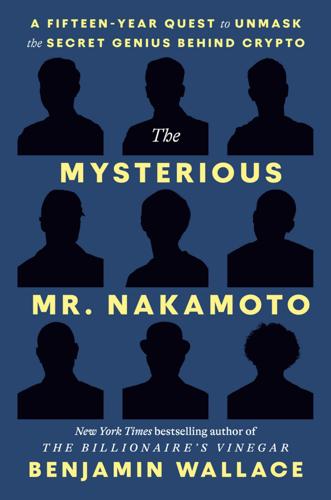
The Mysterious Mr. Nakamoto: A Fifteen-Year Quest to Unmask the Secret Genius Behind Crypto
by
Benjamin Wallace
Published 18 Mar 2025
He liked the idea, once uploading became a possibility and sex drive was no longer needed to propagate the species, of redesigning its purpose: “If I got an orgasm on payday, instead of just a dull looking piece of paper with some abstract numbers, I’d probably be more motivated to make money.” He moved into a tan, high-roofed house in Cupertino that was home to an intentional community called Nexus-Lite. His four roommates included Romana Machado, and they sometimes threw parties, like a potluck supper on a Saturday in March 1994 that they billed the Extropaganza. Some guests, upon arriving, gave each other the extropian handshake that group cofounder Max More had devised: after intertwining fingers, you’d shoot them upwards.

Dawn of the New Everything: Encounters With Reality and Virtual Reality
by
Jaron Lanier
Published 21 Nov 2017
But with VR, people might approximately become cephalopods with childhoods—provided we figure out how to make great VR design software.5 Poïesis Some of the ideas from my old talk can be added to our stable of VR definitions. VR might become, take a deep breath: * * * Forty-eighth VR Definition: A shared, waking state, intentional, communicative, collaborative dream. * * * Put another way, * * * Forty-ninth VR Definition: The technology that extends the intimate magic of earliest childhood into adulthood. * * * The illusions of childhood would be realized. Practical activity would become numinous. I wondered if our infantile natures might turn out to not be so bad if we were honest about them and created sustainable technologies around them.

Dreaming in Code: Two Dozen Programmers, Three Years, 4,732 Bugs, and One Quest for Transcendent Software
by
Scott Rosenberg
Published 2 Jan 2006
Like so many problems in writing software, the question of how to handle recurring events in Chandler proved susceptible to a methodical campaign of divide, conquer, and punt: Divide the problem into manageable parts, conquer enough of them to make things work okay, and postpone tackling the most difficult pieces for the indeterminate future. The developer who ended up tackling most of the recurrence problems, Jeffrey Harris, had started out as a long-distance participant in the project, posting to the mailing lists and contributing code patches. Harris had studied physics at the University of Michigan, then joined an “intentional community” in Missouri called Dancing Rabbit Ecovillage, where he built houses, sang, and ran a software consulting business. In summer 2005, he moved to San Francisco to join OSAF full-time, becoming one of a growing number of OSAF employees who had first hooked up with the project from a distance or as volunteers.
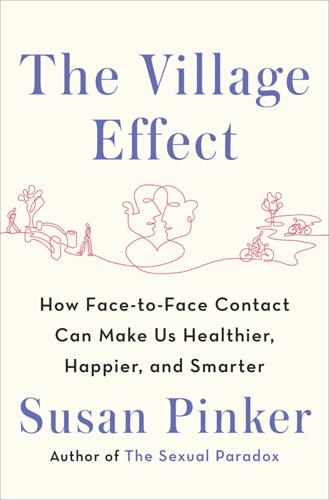
The Village Effect: How Face-To-Face Contact Can Make Us Healthier, Happier, and Smarter
by
Susan Pinker
Published 30 Sep 2013
“This requires a psychologically safe climate, where you don’t have to fear each other.”58 It turns out that the business world runs on the same biological tracks as other face-to-face social networks, the ones that bind people together in Italian hilltop towns, in real neighborhoods, and in “intentional” communities—in churches, synagogues, college dorms, golf foursomes, and swim teams. Given that the same wiring cements together mother and child, not to mention loving spouses, it shouldn’t be surprising that face-to-face social bonds trump the electronic kind when it really matters: when lives, loyalty, or lots of money is at stake.
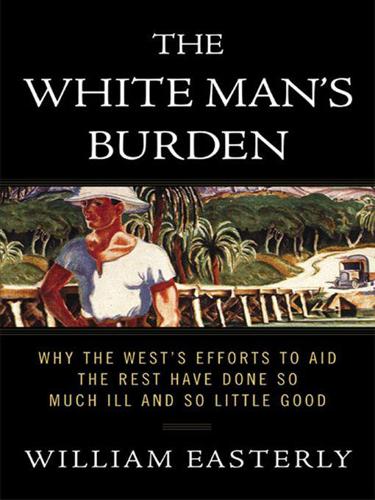
The White Man's Burden: Why the West's Efforts to Aid the Rest Have Done So Much Ill and So Little Good
by
William Easterly
Published 1 Mar 2006
Perhaps the cold war experience offers some lessons for today. I will briefly review today’s humanitarian military interventions at the end of the chapter to see if they are a dramatic improvement on cold war interventions. The advocates of American military intervention during the cold war had good intentions. Communism was an evil economic and political system. The Soviets did their own meddling in poor countries, which could have required meddling by the Americans in response. Perhaps military action may have been necessary to get rid of some evil governments imposed by the Soviets. However, even political opponents of evil governments show little gratitude for American invasion to modernize them.
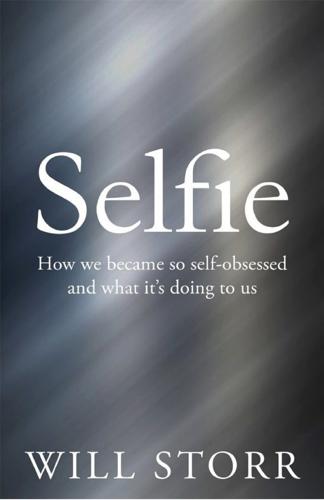
Selfie: How We Became So Self-Obsessed and What It's Doing to Us
by
Will Storr
Published 14 Jun 2017
There was a Sunday evening atmosphere; recycling bins, concrete Buddhas and men in shorts with prominent veins riding expensive bicycles. Finally, the train stopped at Sunnyvale, where you alight for Cupertino, home of Apple. I took a taxi up a winding hill to the Rainbow Mansion, a large cream house with a terracotta roof that was now an ‘intentional community’ made up of bright young tech workers. My search for the self had taken me, once again, to the Western world’s edge. Now that I’d landed in the present day, I had the opportunity to meet selves that should be, if the ideas I’d been pursuing were correct, made up of so many of the lives of their ancestors.
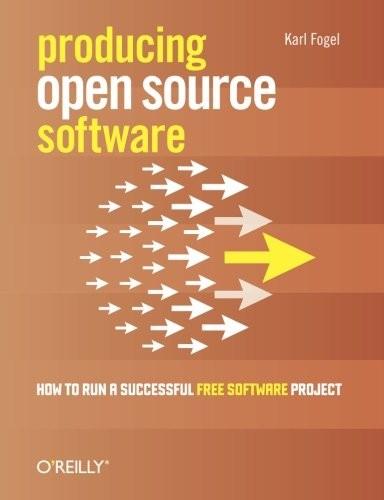
Producing Open Source Software: How to Run a Successful Free Software Project
by
Karl Fogel
Published 13 Oct 2005
Free software is a culture by choice. To operate successfully in it, you have to understand why people choose to be in it in the first place. Coercive techniques don't work. If people are unhappy in one project, they will just wander off to another one. Free software is remarkable even among intentional communities for its lightness of investment. Many of the people involved have never actually met the other participants face-to-face. The normal conduits by which humans bond with each other and form lasting groups are narrowed down to a tiny channel: the written word, carried over electronic wires. Because of this, it can take a long time for a cohesive and dedicated group to form.

The Peripheral
by
William Gibson
Published 23 Oct 2014
Good at pretending, though.” “What did he pretend to be?” he asked. “A prophet. A shaman. Motivated extraordinarily, thus extraordinarily motivating. Taking the same drugs they took, which he himself provided. Though of course he didn’t actually take them. If you fancy resenting the tedious, I recommend intentional communities, particularly those led by charismatics.” “You believe he was here, while he was doing that?” “No, not here. Geneva.” “Geneva?” “As a place to await an opportunity to optimally monetize the island, as good as any. And, of course, his mother is Swiss.” “With two penises and the head of a frog?”

Make Your Own Job: How the Entrepreneurial Work Ethic Exhausted America
by
Erik Baker
Published 13 Jan 2025
All of us felt like passengers on a very fast vehicle bound for unknown places.”47 The vehicle proved to be moving a little too fast for Hawken, however. That same year, overwhelmed by the magnitude of Erewhon’s growth, he resigned his position, sold his twenty-five percent ownership share, and moved to an intentional community in Findhorn, a village in northern Scotland. After a brief sojourn he divorced his first wife and moved back to the San Francisco Bay Area with an Australian woman, Anna, whom he had met at Findhorn. Financial mismanagement swiftly reduced him to near bankruptcy, which he aimed to rectify by writing a book about Findhorn while working as a gardener.
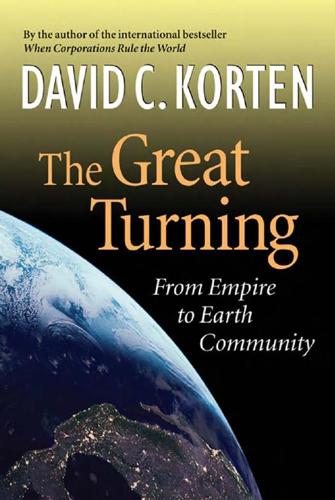
The Great Turning: From Empire to Earth Community
by
David C. Korten
Published 1 Jan 2001
In modern societies in which even the standard two-parent nuclear family is at risk, it may be neither possible nor appropriate to return to the often insular and oppressive model of the extended biological family. It is possible, however, to create virtual families within the context of intentional communities — such as co-housing compounds and ecovillages — that offer many of the benefits of the extended biological family, with fewer of the disabilities. Such communities readily accommodate a variety of nuclear-family arrangements within virtual extendedfamily groupings that offer the benefits of age and gender diversity and multiple providers of child and elder care, while being relatively more open and less confining than the biological extended family.
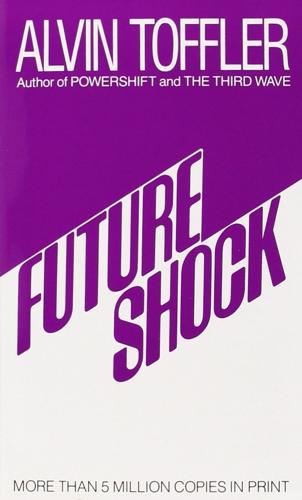
Future Shock
by
Alvin Toffler
Published 1 Jun 1984
Today, as in the past, the weight of established society comes down hard on the visionary who attempts to practice, as well as merely preach. Rather than ostracizing utopians, we should take advantage of their willingness to experiment, encouraging them with money and tolerance, if not respect. Most of today's "intentional communities" or utopian colonies, however, reveal a powerful preference for the past. These may be of value to the individuals in them, but the society as a whole would be better served by utopian experiments based on super- rather than pre-industrial forms. Instead of a communal farm, why not a computer software company whose program writers live and work communally?
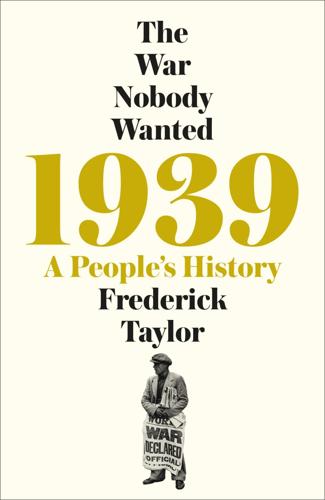
1939: A People's History
by
Frederick Taylor
Published 26 Jun 2019
Such letters—if they serve any purpose at all—only increase the tension between Germany and this country.16 King-Hall’s letters had patently cut the Reich to the quick. When Sir Nevile Henderson received his very last communication from the German Foreign Minister, a few fatal weeks later, King-Hall was mentioned by name and promoted to official spokesman of the British government: The intention communicated to us by order of the British Government by Mr King Hall, of carrying the destruction of the German people even further than was done through the Versailles Treaty is taken note of by us, and we shall therefore answer any aggressive action on the part of England with the same weapons and in the same form.17 Like most modern dictators and their servants, Hitler found it impossible to believe that his government had been subjected to extreme embarrassment not by some dastardly envoy of a foreign power but by an eccentric independent commentator who followed his instincts and wrote what he liked.
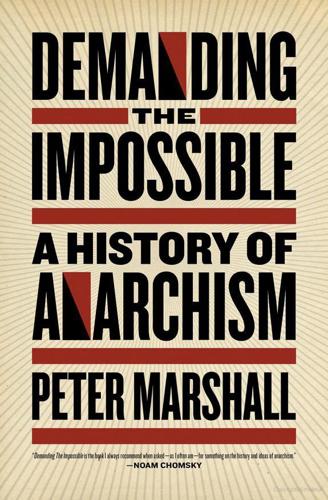
Demanding the Impossible: A History of Anarchism
by
Peter Marshall
Published 2 Jan 1992
Clark broke away from Bookchin, refusing to be Engels to his Marx, and came to see him as an incoherent thinker who had lost touch with the anarchist tradition.61 To his version of libertarian municipalism, Clark counterposed a form of ‘ecocommunitarian’ politics inspired by ‘a vision of human communities achieving their fulfillment as an integral part of the larger, self-realizing earth community’.62 But while Clark came to see the inadequacy of Bookchin’s Aristotelian way of thinking, he still continues to work within the tradition of social ecology in order to reinvigorate it and develop it in a more dialectical, spiritual and communal direction. He is also keen to promote a political movement based on small primary communities, including affinity groups, intentional communities and co-operatives, which he sees as playing a potentially significant liberatory role in society. Clearly social ecology is not the special reserve of Bookchin but a fertile land with open borders. While educated in the Enlightenment and the Western humanist tradition, Clark’s interest in Taoism, Zen, Surrealism and Situationism has led him to explore the realm of the magical and the imaginary.
…
Encompassing a Left libertarian perspective and an emphatically activist standpoint, these conversations are meant to be read in the clubs and affinity groups of the new Movement. The authors accompany us on a journey through modern revolutions, direct actions, anti-globalist counter summits, Freedom Schools, Zapatista cooperatives, Haymarket and Petrograd, Hanoi and Belgrade, ‘intentional’ communities, wildcat strikes, early Protestant communities, Native American democratic practices, the Workers’ Solidarity Club of Youngstown, occupied factories, self-organized councils and Soviets, the lives of forgotten revolutionaries, Quaker meetings, antiwar movements, and prison rebellions. Neglected and forgotten moments of interracial self-activity are brought to light.

The Unwinding: An Inner History of the New America
by
George Packer
Published 4 Mar 2014
There was Eliezer Yudkowsky, an artificial-intelligence researcher who had cofounded the Singularity Institute—an autodidact who never went past eighth grade, he was the author of a thousand-page online fanfic called Harry Potter and the Methods of Rationality, which recast the original story in an attempt to explain Harry’s wizardry through the scientific method. And there was Patri Friedman, the founder of the Seasteading Institute. An elfin man with cropped black hair and a thin line of beard, he was dressed in the eccentrically antic manner of Raskolnikov. He lived in Mountain View in an “intentional community” as a free-love libertarian, about which he regularly blogged and tweeted: “Polyamory/competitive govt parallel: more choice/competition yields more challenge, change, growth. Whatever lasts is tougher.” Over dinner, Nosek argued that the best entrepreneurs in the world were seized with a single idea to which they would devote their lives.
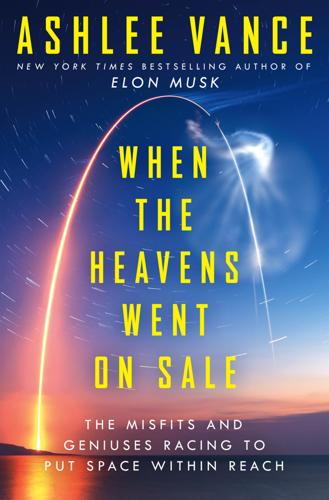
When the Heavens Went on Sale: The Misfits and Geniuses Racing to Put Space Within Reach
by
Ashlee Vance
Published 8 May 2023
The spirit of the Rainbow Mansion aligned with what Pete’s Kids were doing at NASA. At work, they were trying to shake up the space industry and put more power into the hands of individuals rather than governments and the military. At home, Jessy Kate, Robbie, and Marshall were proponents of new social structures. They viewed the house as an “intentional community” that was designed to spur discussions of big ideas that might alter the status quo and reorganize society for the better. The counterculture vibes of the 1960s had certainly been dulled by the engineers and investors who had descended upon the Bay Area, but the remnants of that era were alive to some extent within the house.
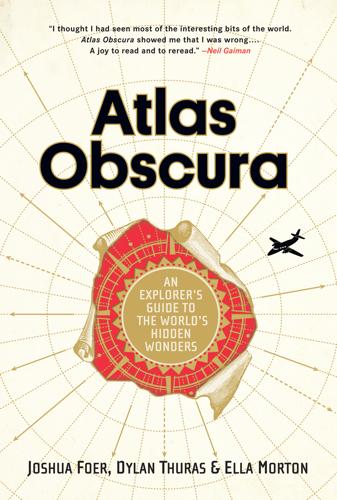
Atlas Obscura: An Explorer's Guide to the World's Hidden Wonders
by
Joshua Foer
,
Dylan Thuras
and
Ella Morton
Published 19 Sep 2016
The crater is on private property, but a historical marker sits by the access road. 34.200940 79.657117 Oyotunji African Village SHELDON On the road into Oyotunji Village, a sign states, “You are leaving the United States. You are entering Yoruba Kingdom.” Established in 1970, Oyotunji is an intentional community based on the culture of the Yoruba ethnic group of West Africa, particularly Nigeria. Its inhabitants live according to traditional Yoruba values and honor the Supreme Being Olodumare and the ancestral spirits through ritual dance, music, and ceremonies. During its early days, Oyotunji was home to about 200 people.
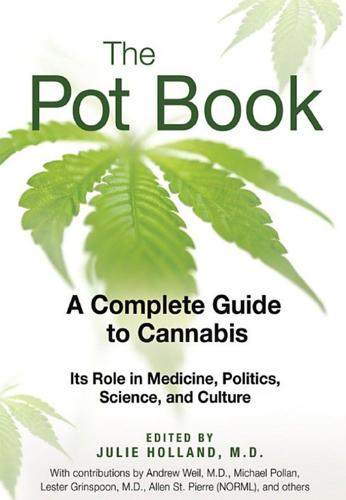
The Pot Book: A Complete Guide to Cannabis
by
Julie Holland
Published 22 Sep 2010
All this occurred just prior to Nixon turning against the recommendation of the Shafer Commission, which favored President modification of the Controlled Substances Act of 1970 by decriminalizing cannabis. This effectively removed any opportunity for studying cannabis outside of the government’s control. After residency in 1977, my family moved to The Farm, an intentional community in Tennessee, where cannabis was used as a sacrament among its several hundred residents, despite the fact that this was in violation of state and federal laws. For the next five years, I served as a general practitioner in the community. Time after time, I learned of cannabis helping people with all kinds of maladies.

Goliath: Life and Loathing in Greater Israel
by
Max Blumenthal
Published 27 Nov 2012
Three hours later, I pushed through the crowds outside Tel Aviv’s Central Bus Station and found Yonathan’s car waiting on a corner on Levinsky Street. In the passenger seat was an eighteen-year-old guy with spiky, jet-black hair named Yuval. He was new but deeply committed; he represented the next generation of Anarchists Against the Wall. Yonatan and Yuval had met in Neve Shalom, a Jewish-Arab intentional community where Israelis and Palestinians engage in dialogue seminars, though not the kind familiar to peace industry NGOs like the Peres Center. “We were forced to acknowledge the power imbalance,” Yonathan said, “by speaking not as individuals, but as part of a group. It really helped everyone understand the dynamics of occupation and the privilege of being born a Jewish Israeli.”

Behave: The Biology of Humans at Our Best and Worst
by
Robert M. Sapolsky
Published 1 May 2017
Amici et al., “Variation in Withholding of Information in Three Monkey Species,” Proc Royal Soc B Biol Sci 276 (2009): 3311; A. le Roux et al., “Evidence for Tactical Concealment in a Wild Primate,” Nat Communications 4 (2013): 1462; A. Whiten and R. W. Byrne, “Tactical Deception in Primates,” BBS 11 (1988): 233; F. de Waal, Chimpanzee Politics: Power and Sex Among Apes (Baltimore, MD: Johns Hopkins University Press, 1982); G. Woodruff and D. Premack, “Intentional Communication in the Chimpanzee: The Development of Deception,” Cog 7 (1979): 333; R. W. Byrne and N. Corp, “Neocortex Size Predicts Deception Rate in Primates,” Proc Royal Soc B Biol Sci 271 (2004): 693; C. A. Ristau, “Language, Cognition, and Awareness in Animals?” ANYAS 406 (1983): 170; T. Bugnyar and K.